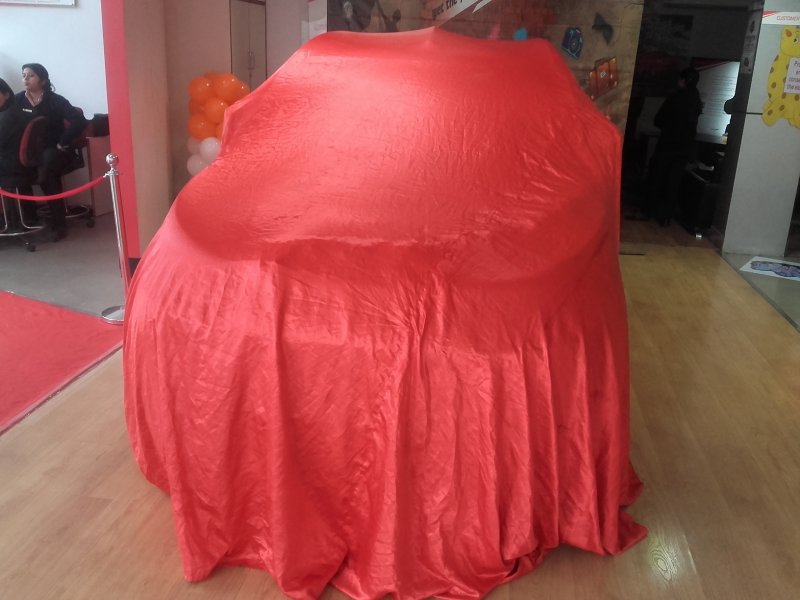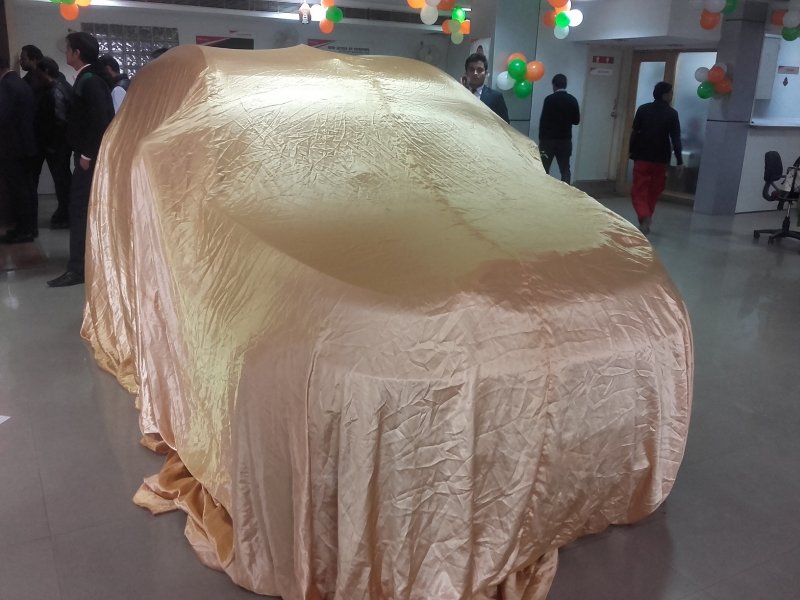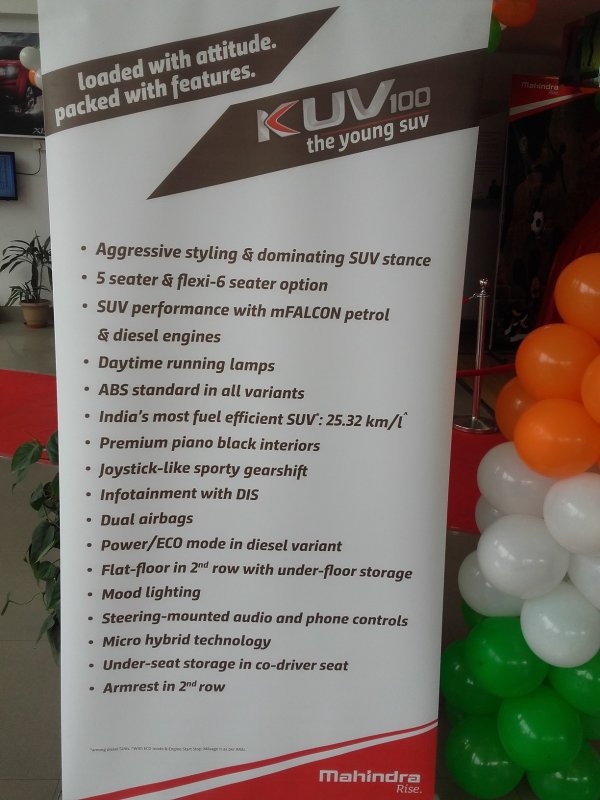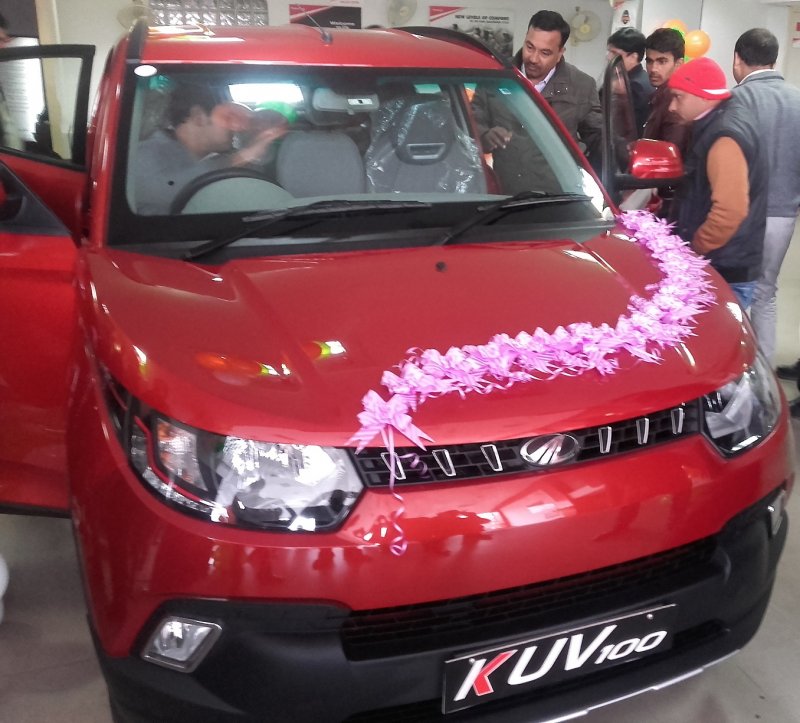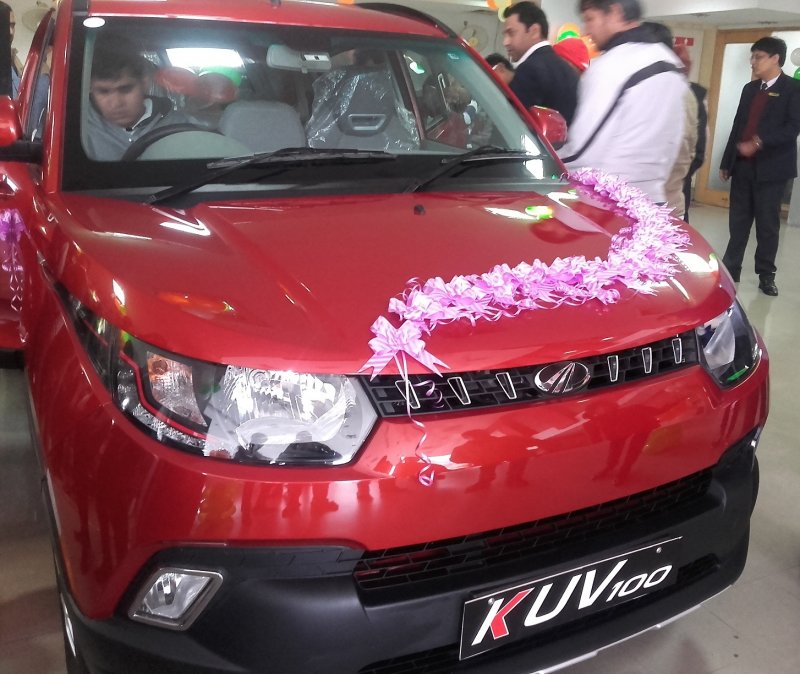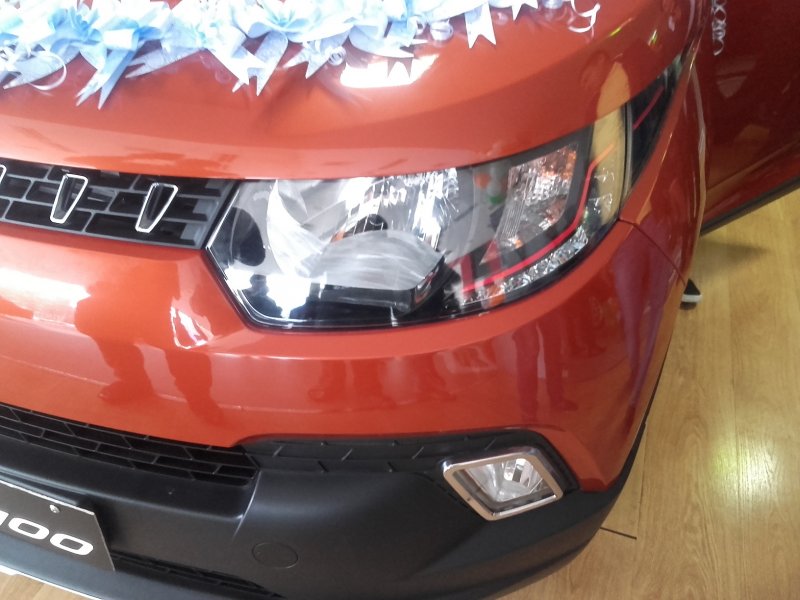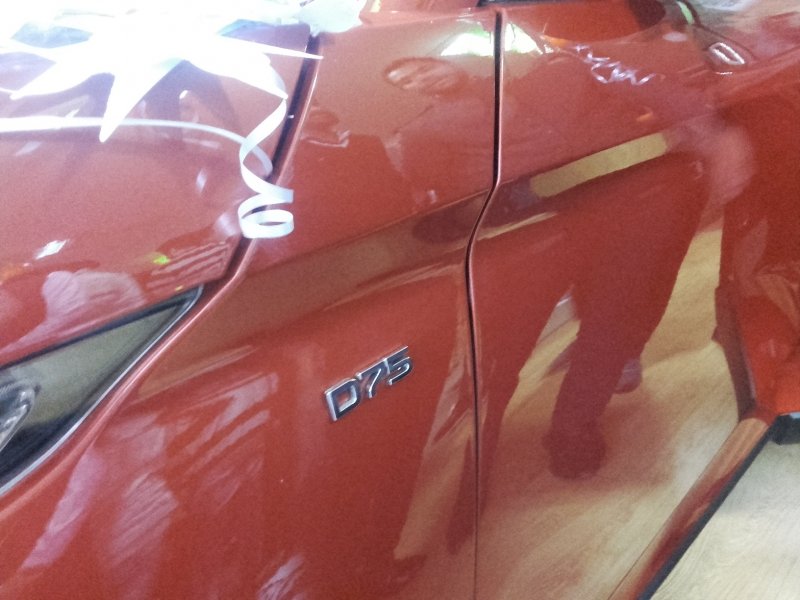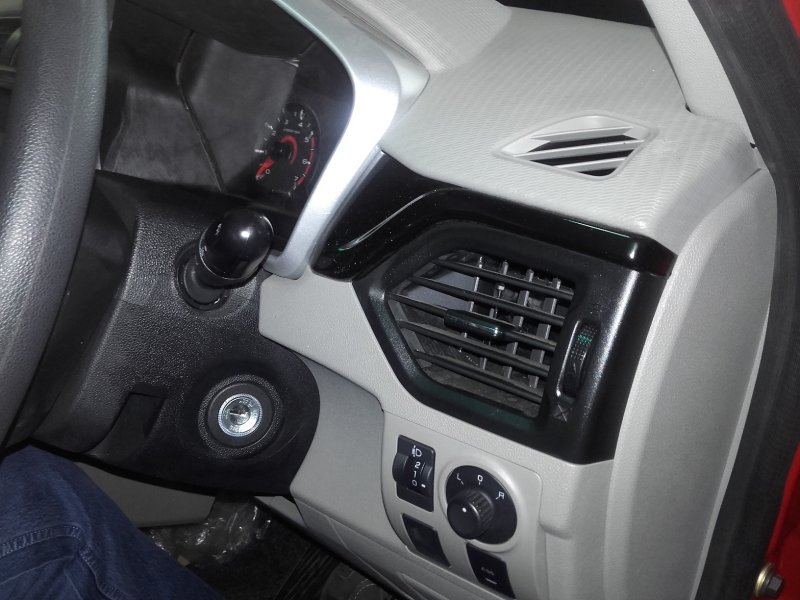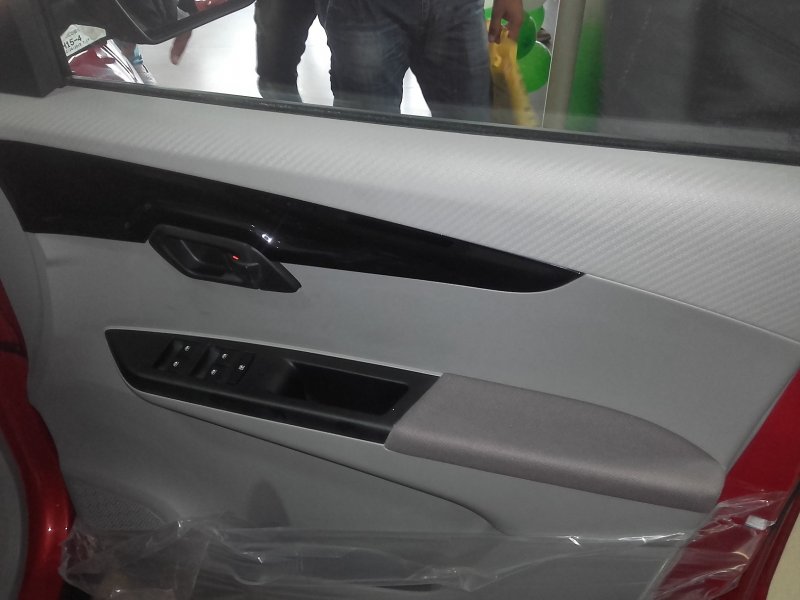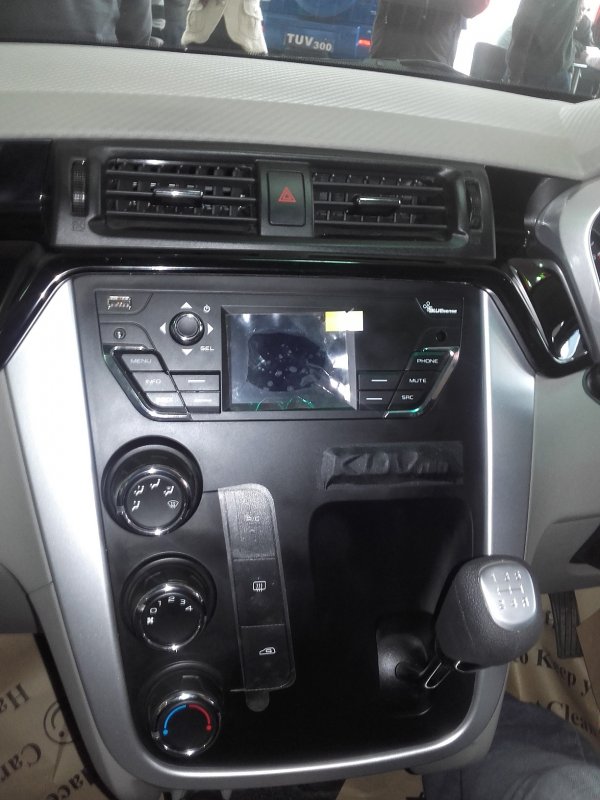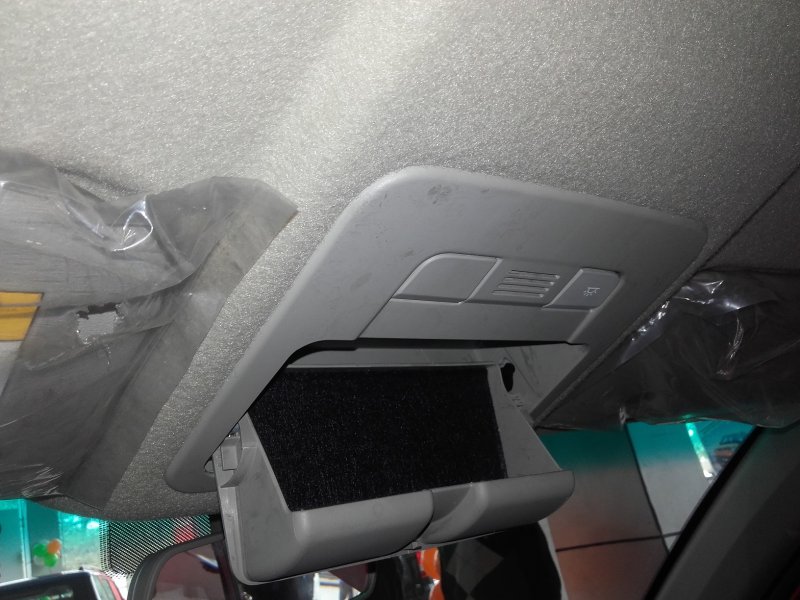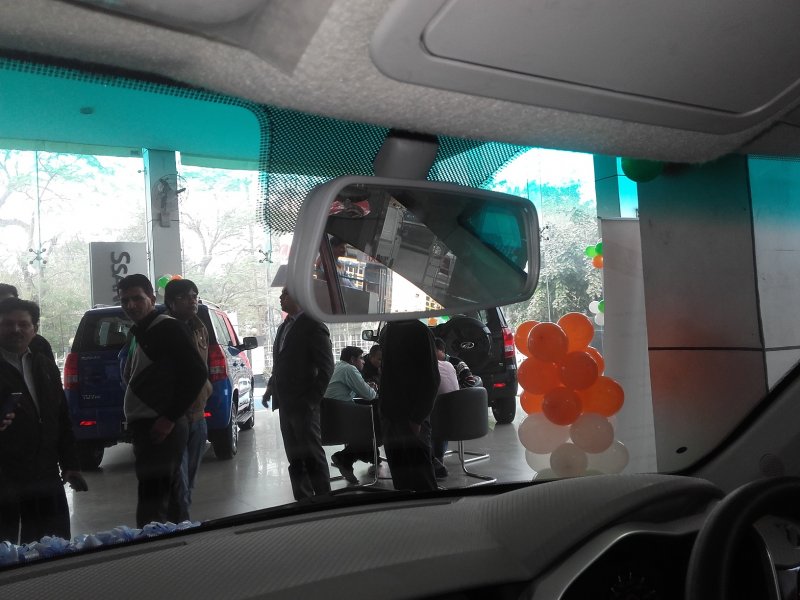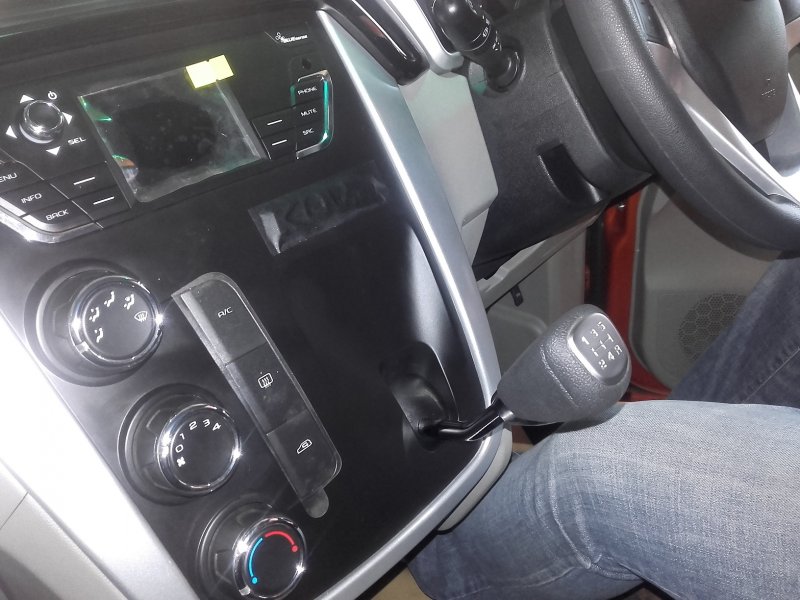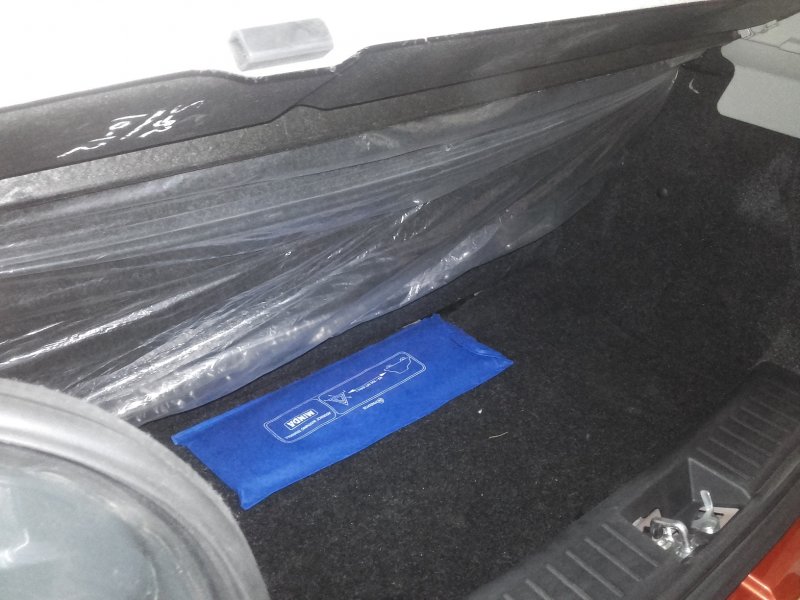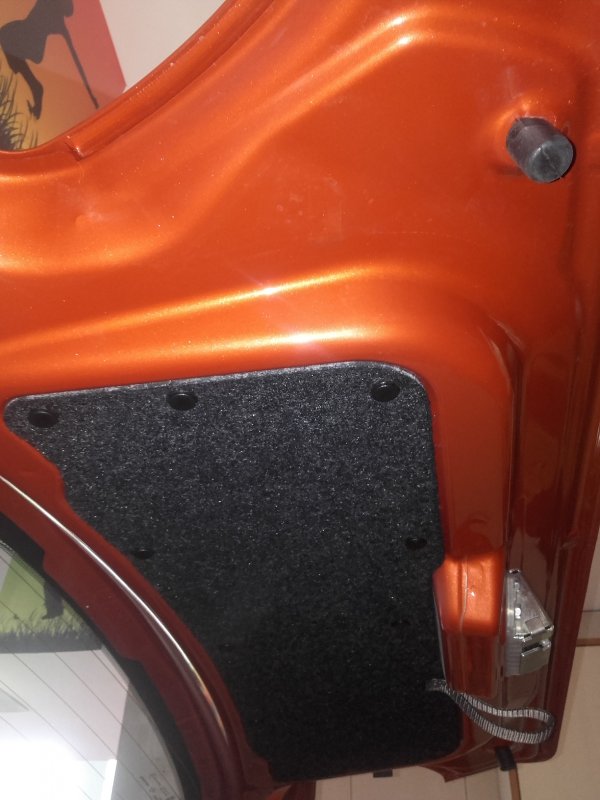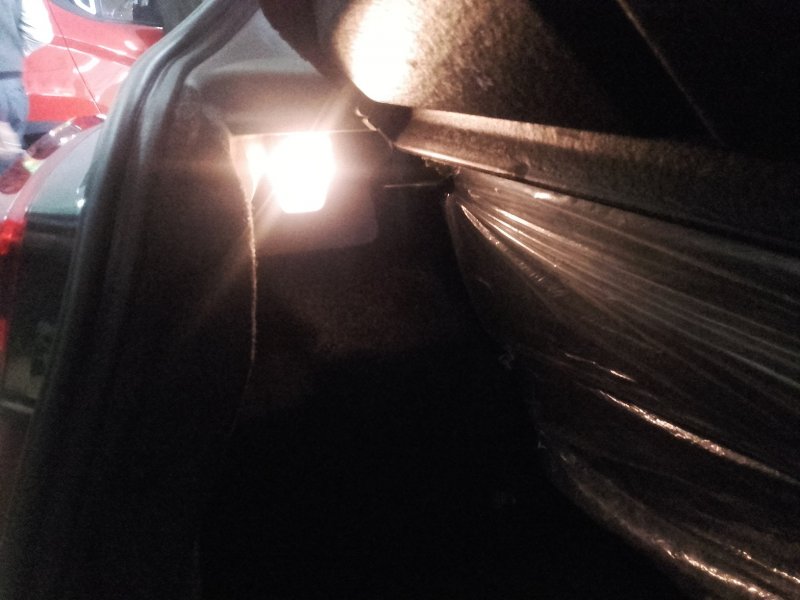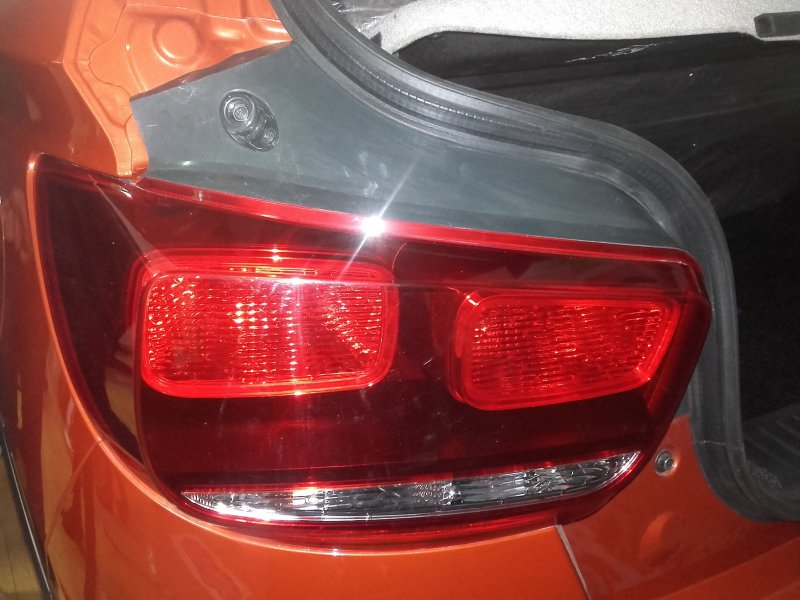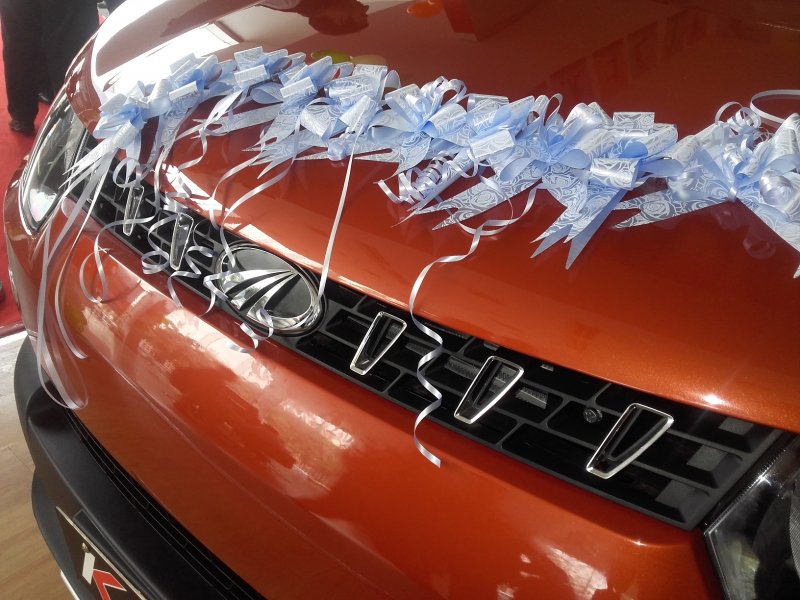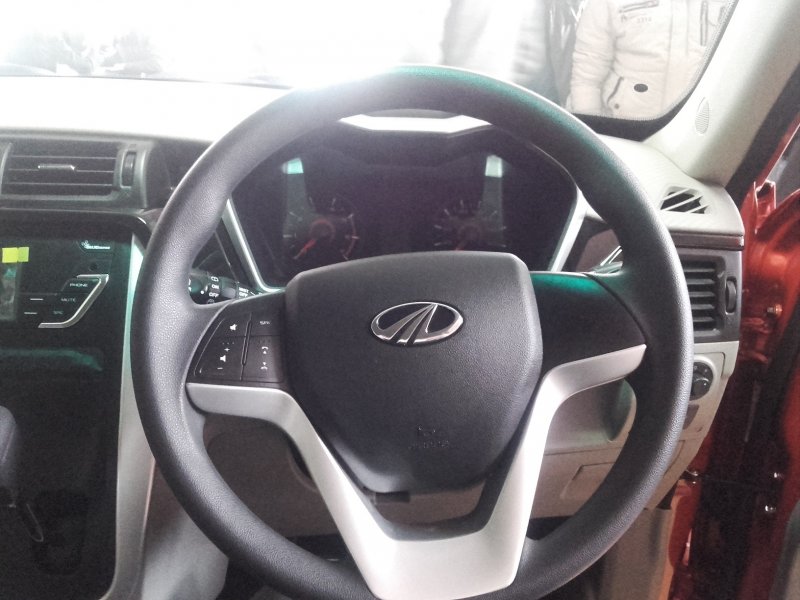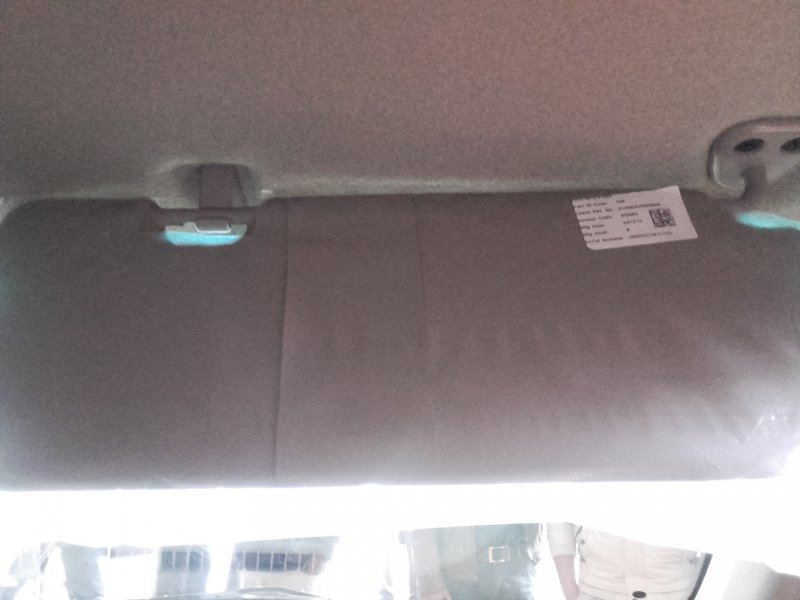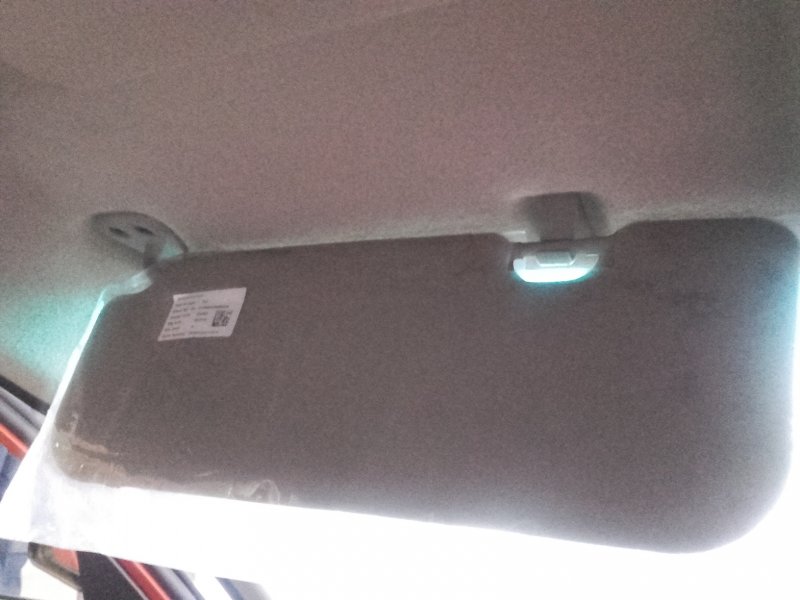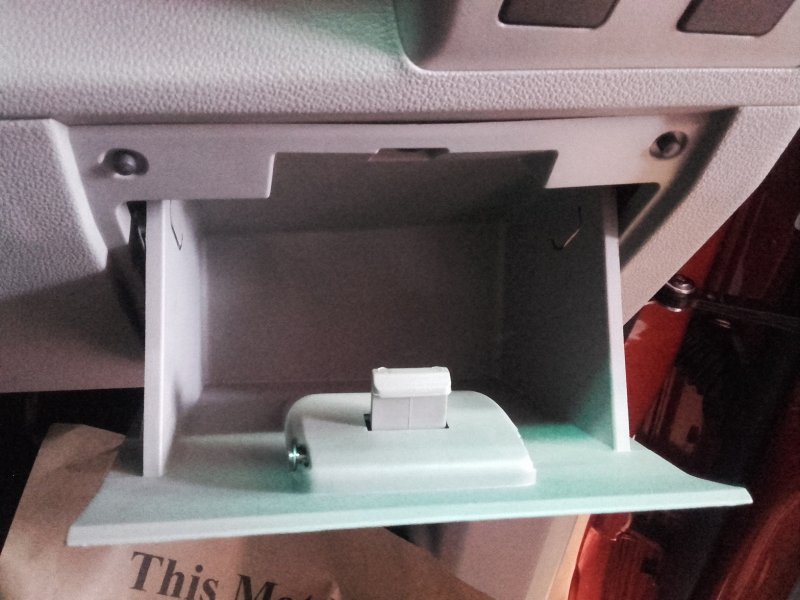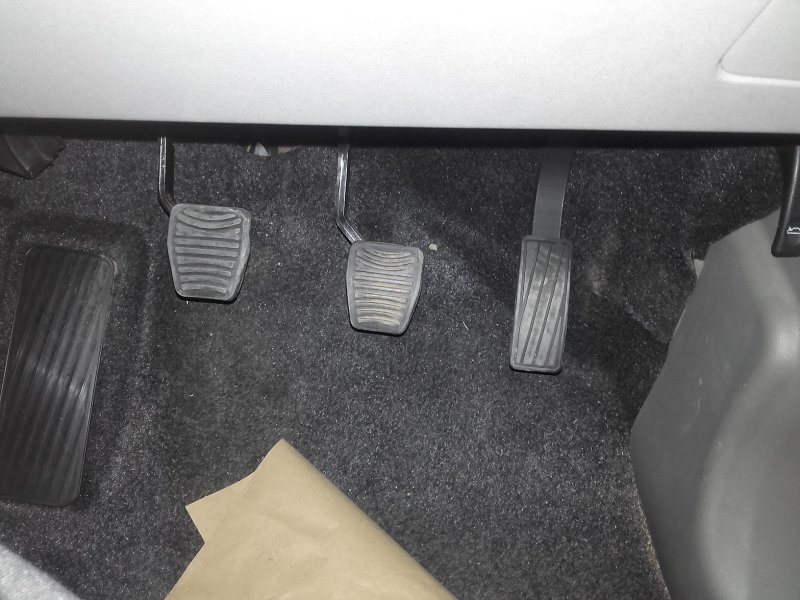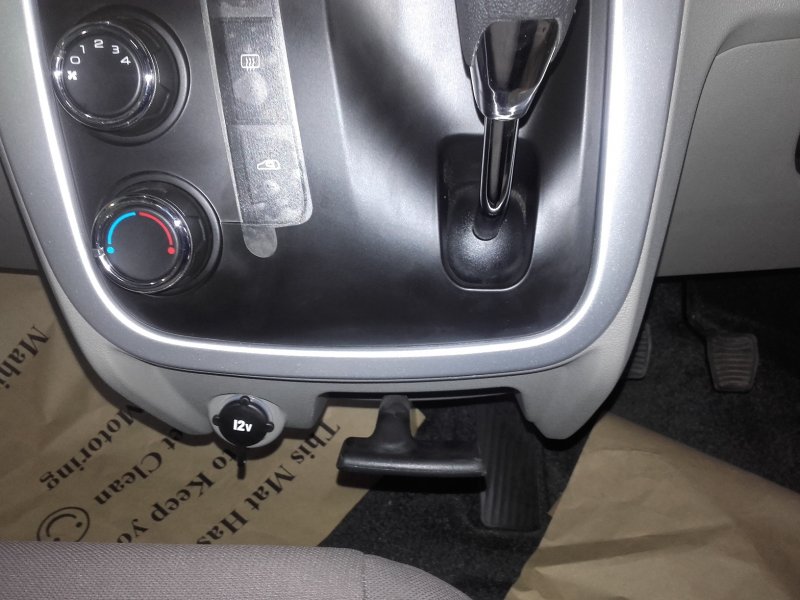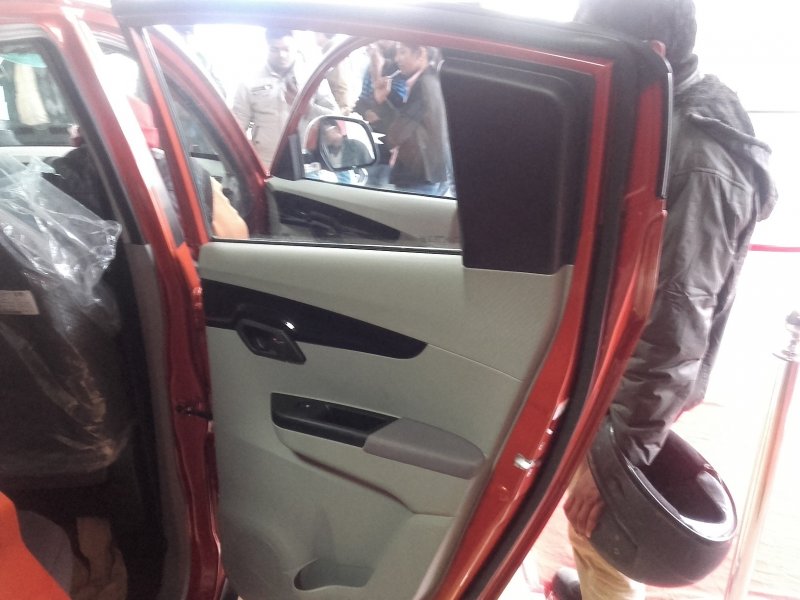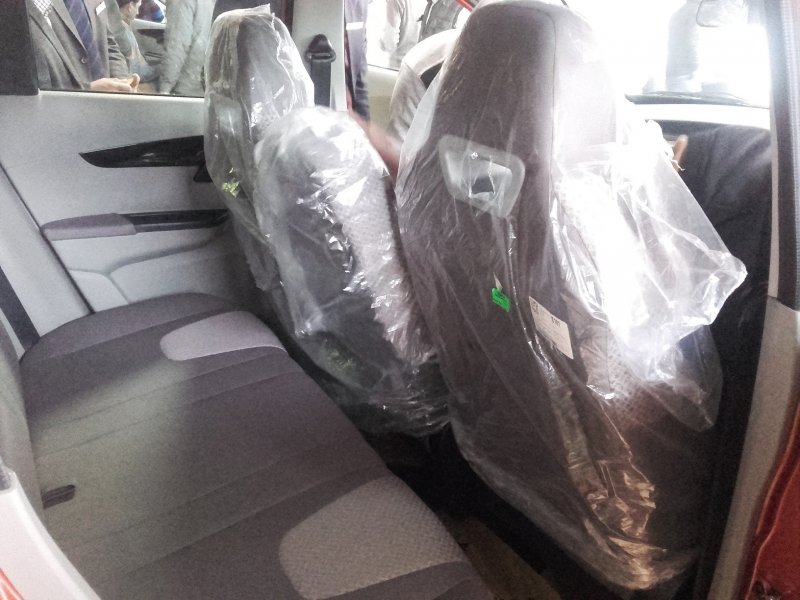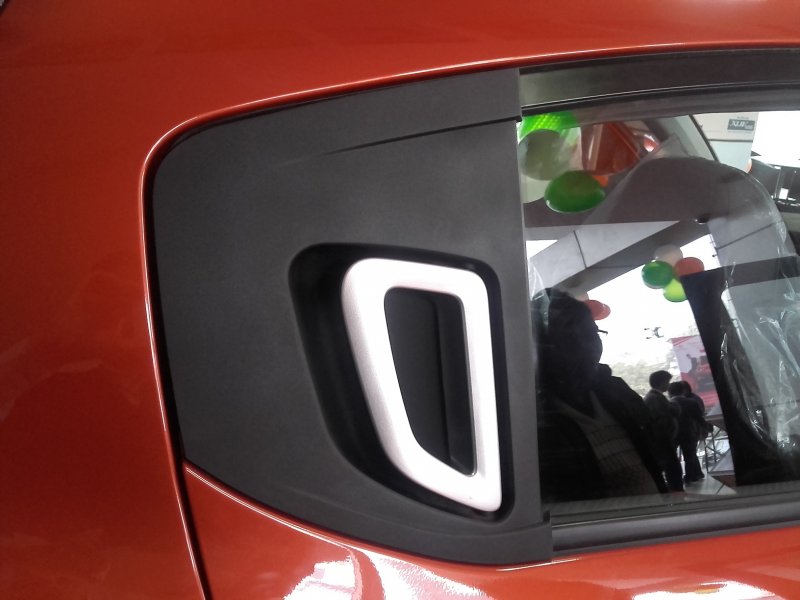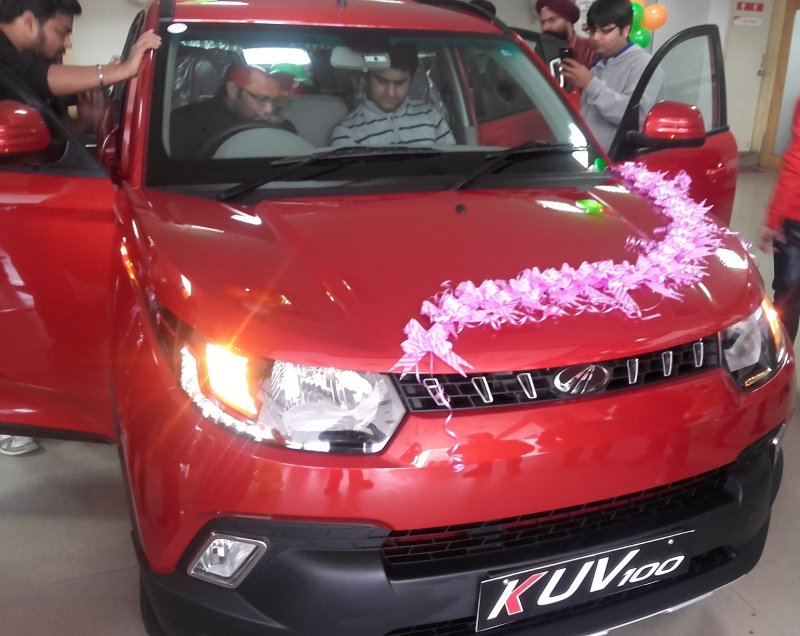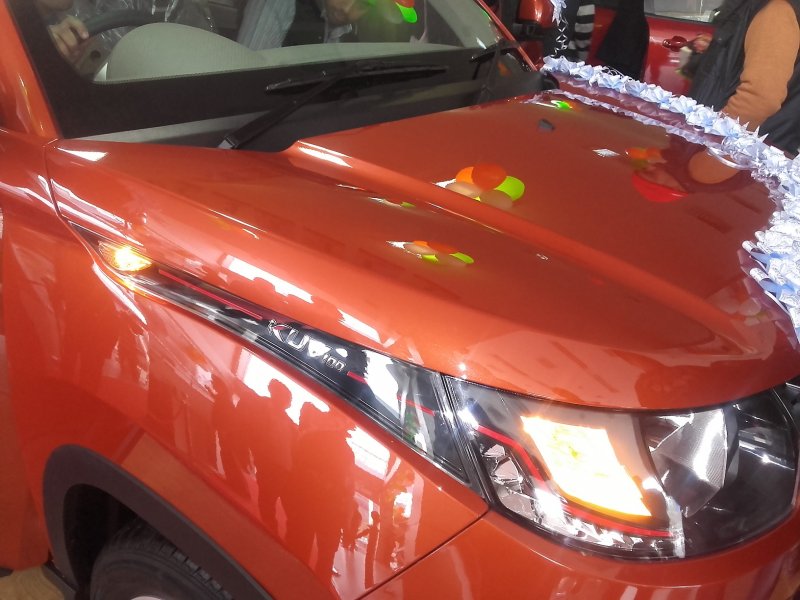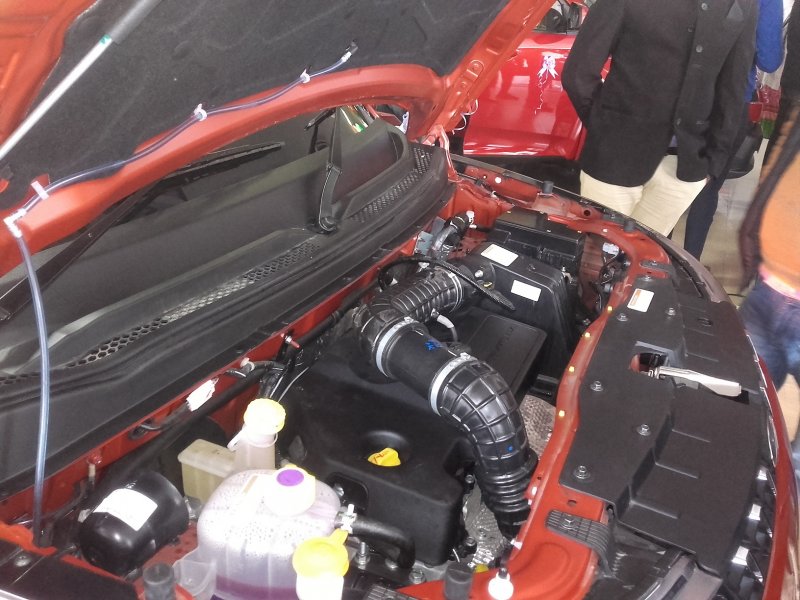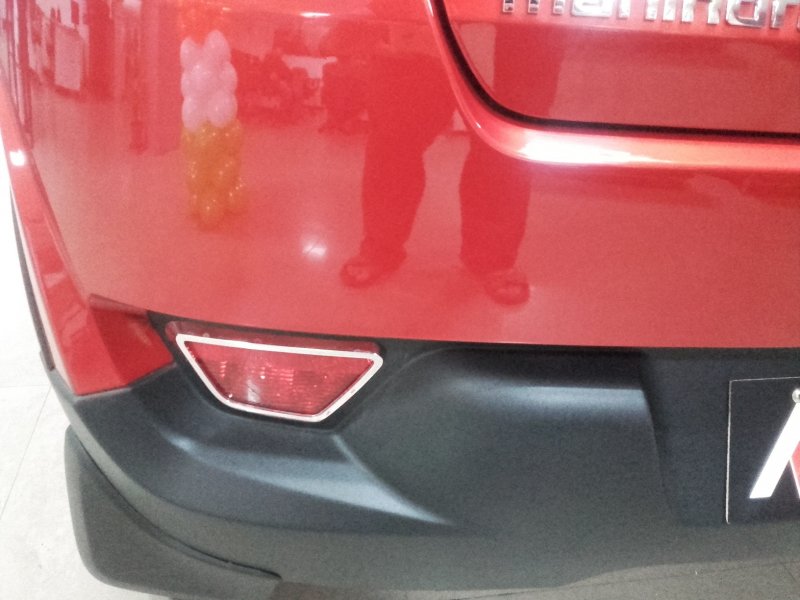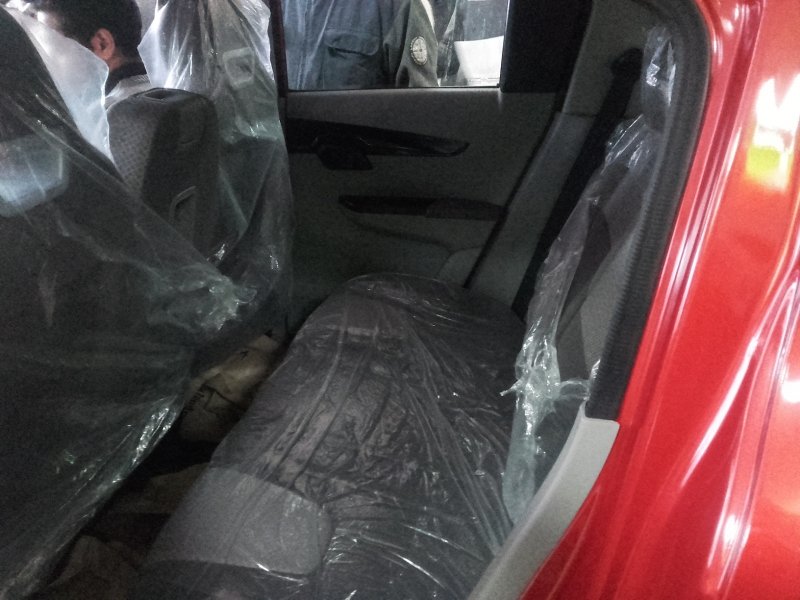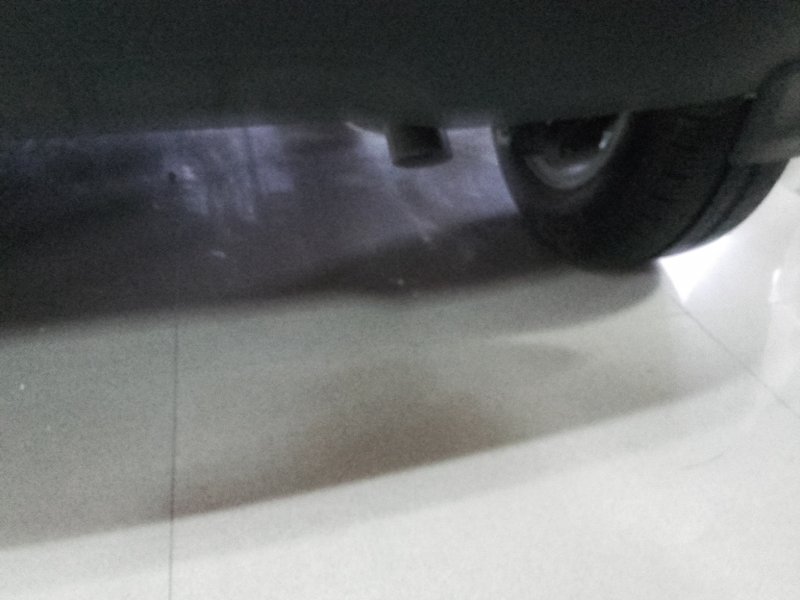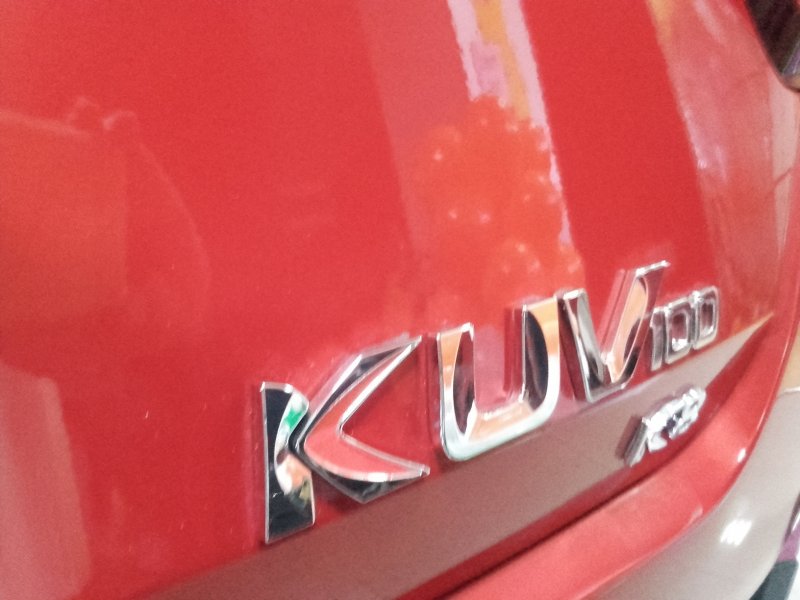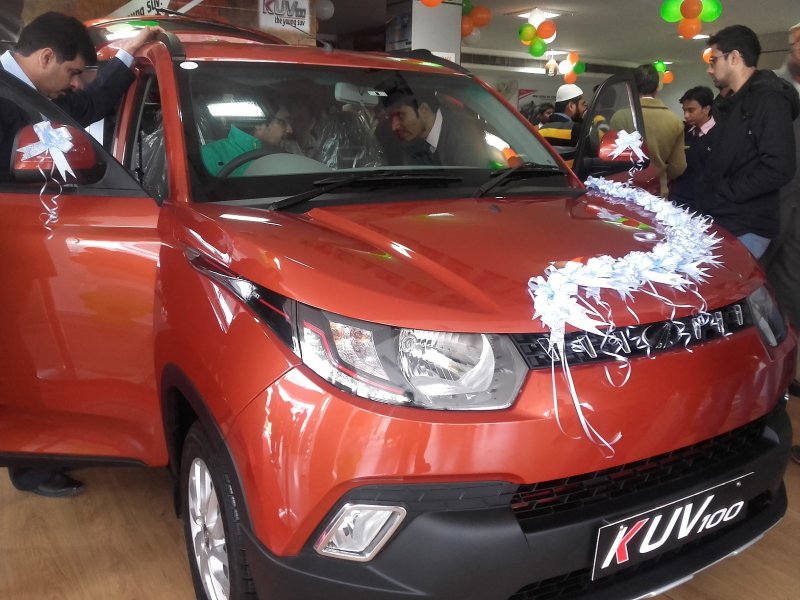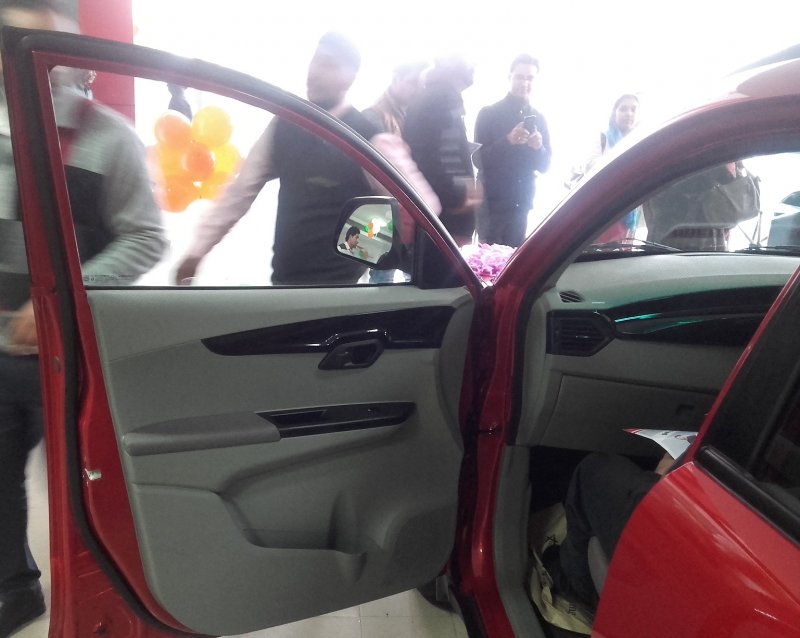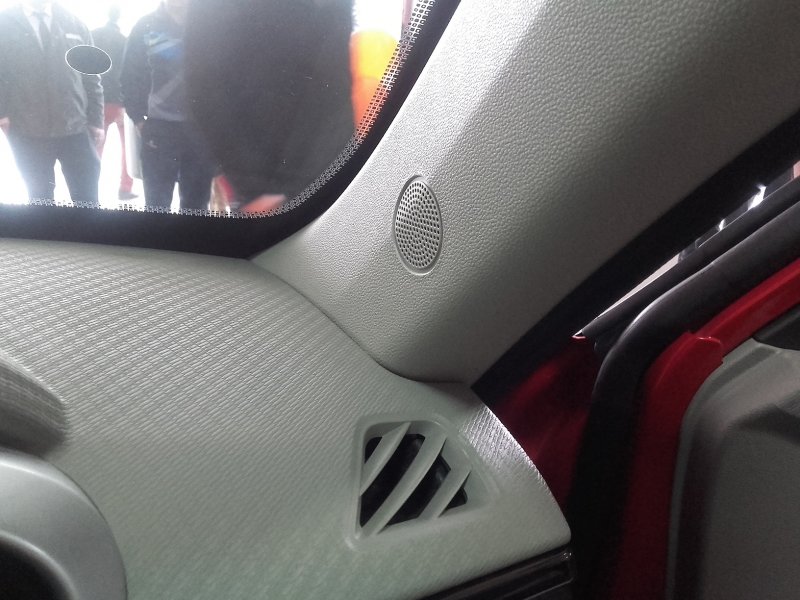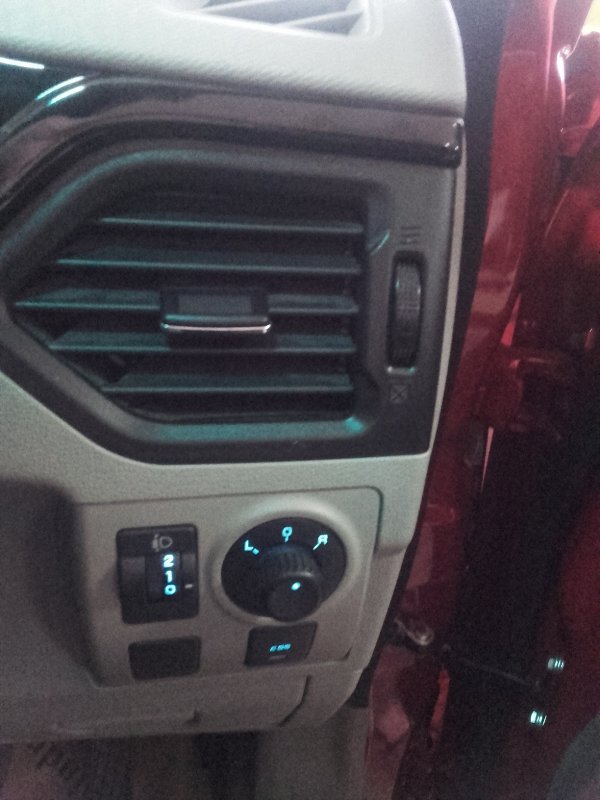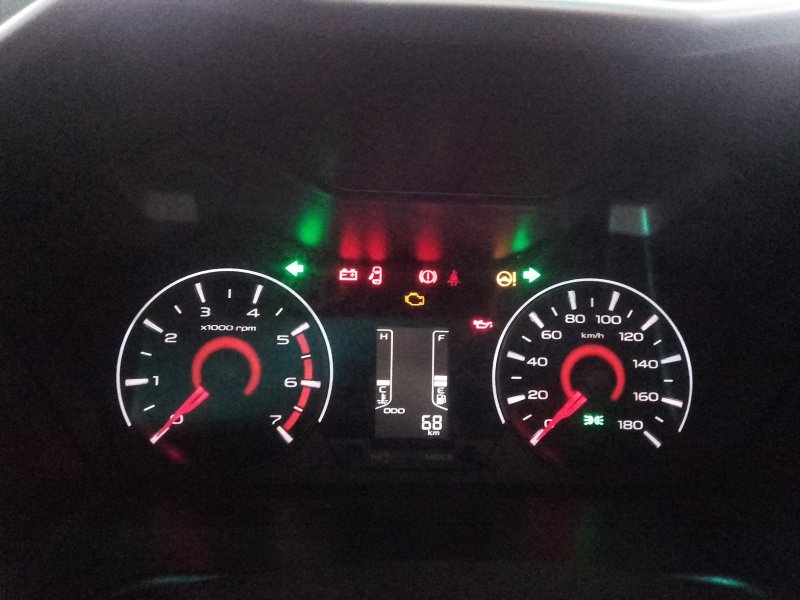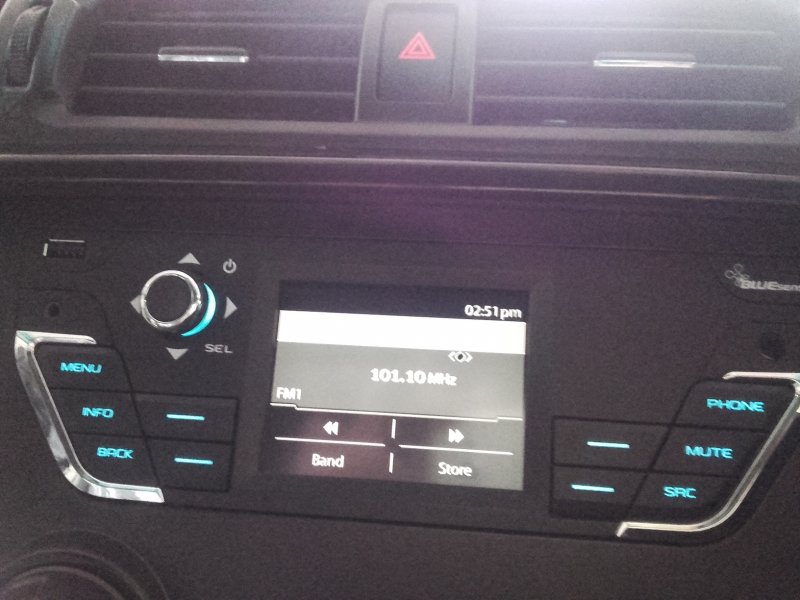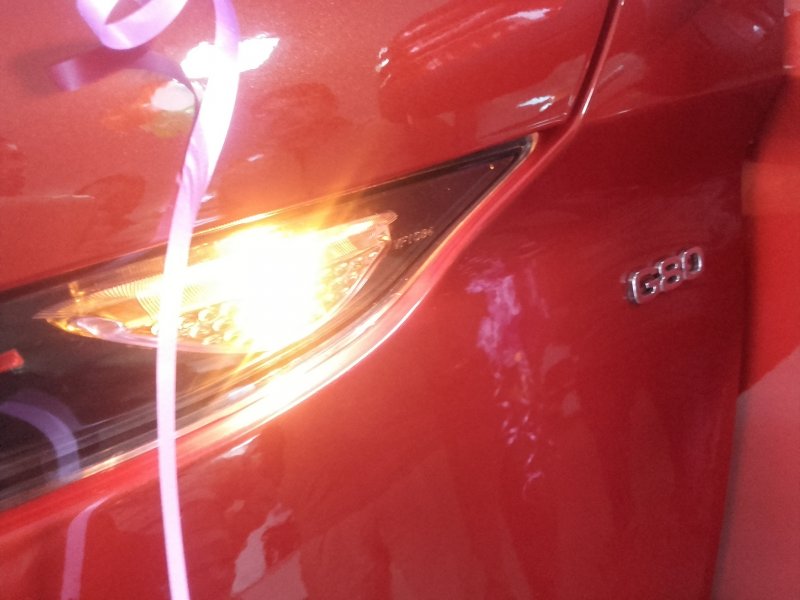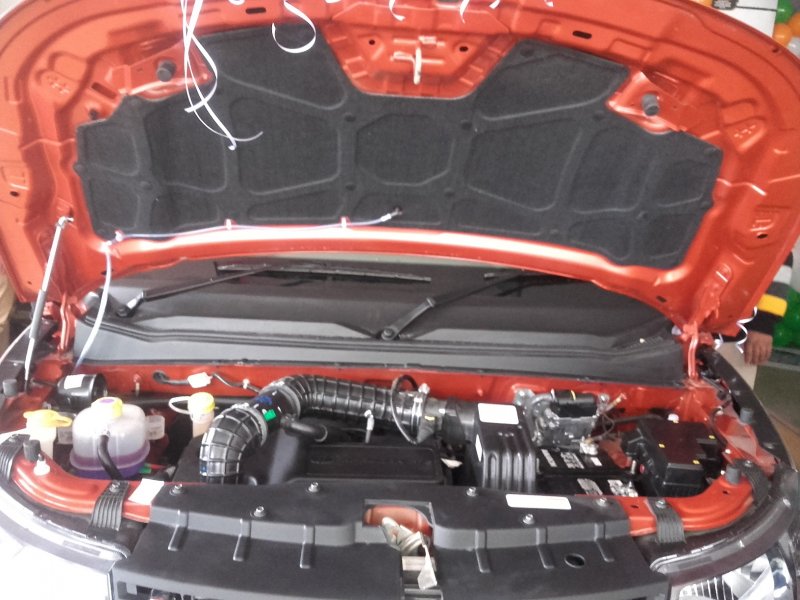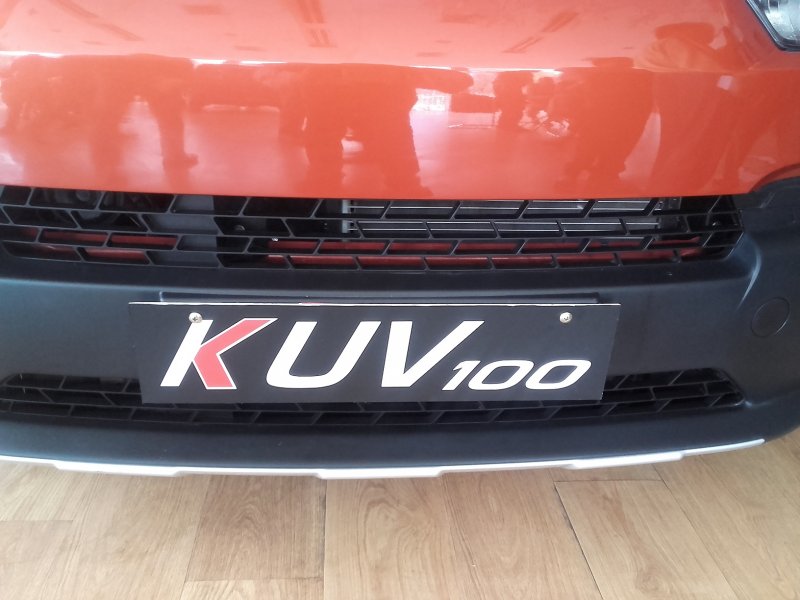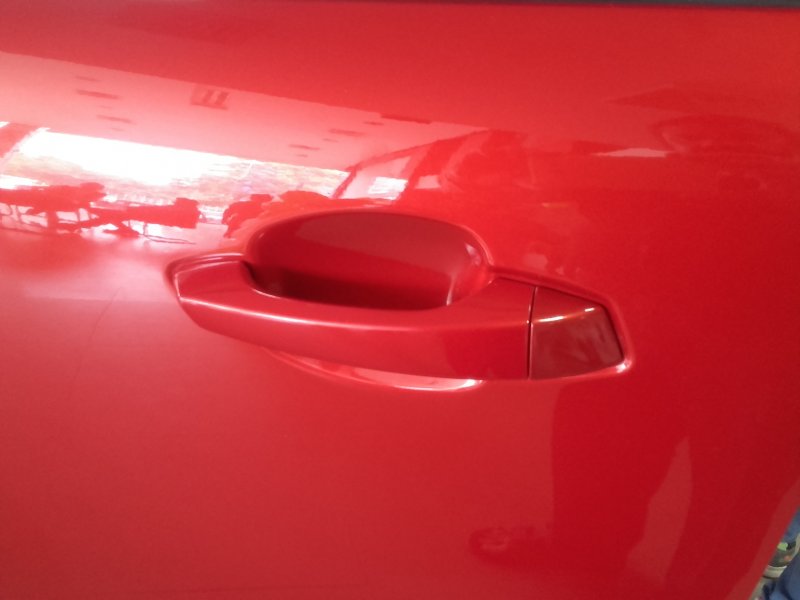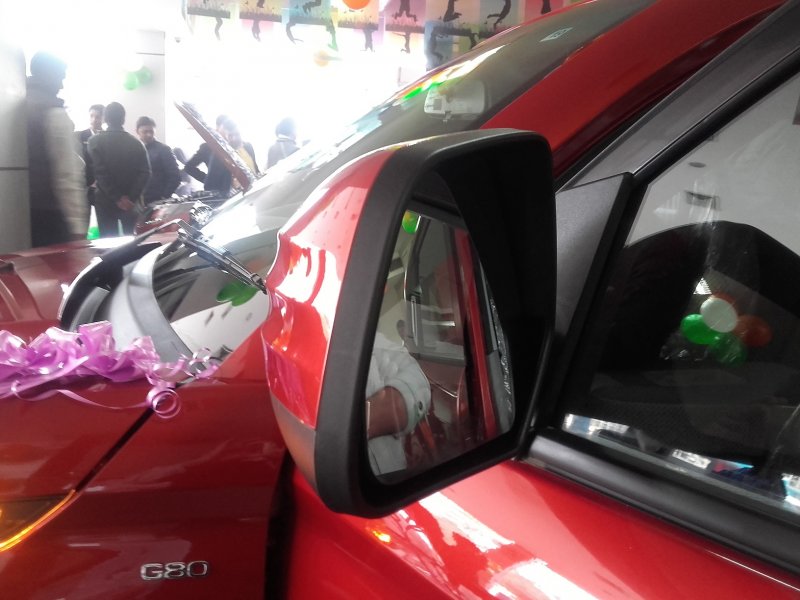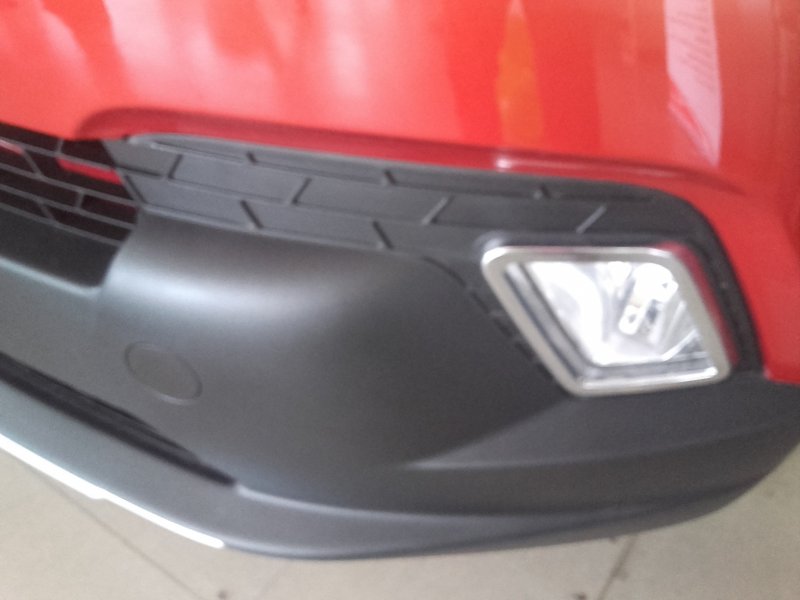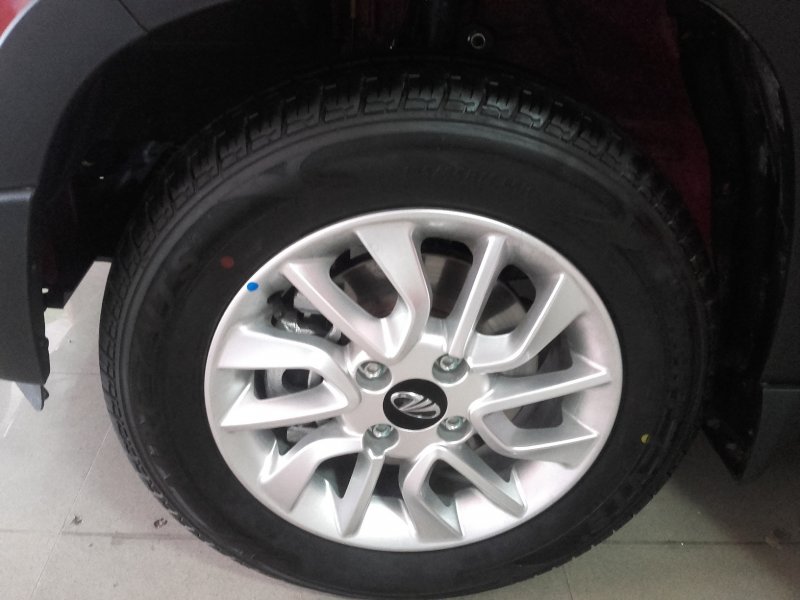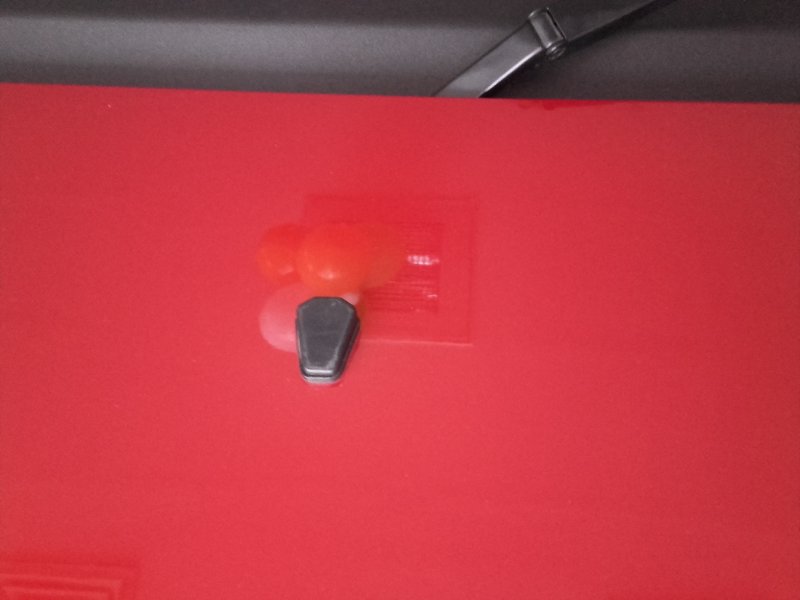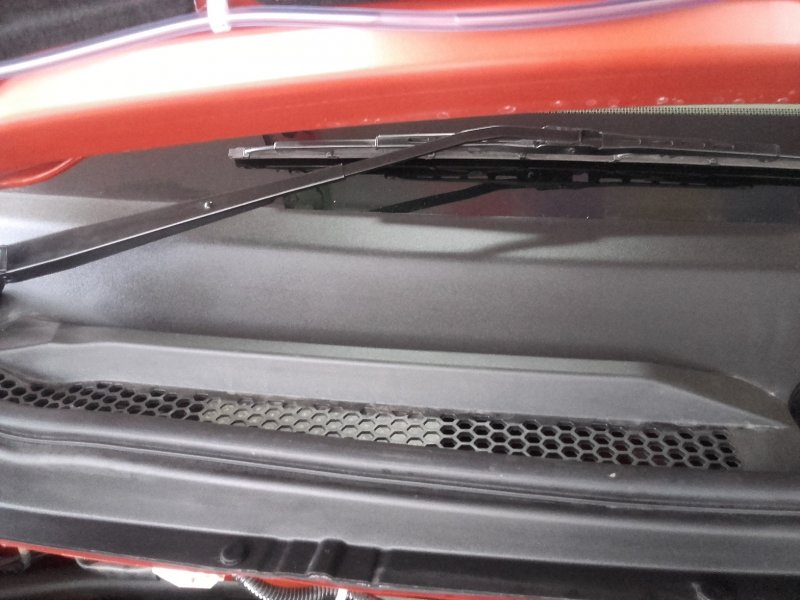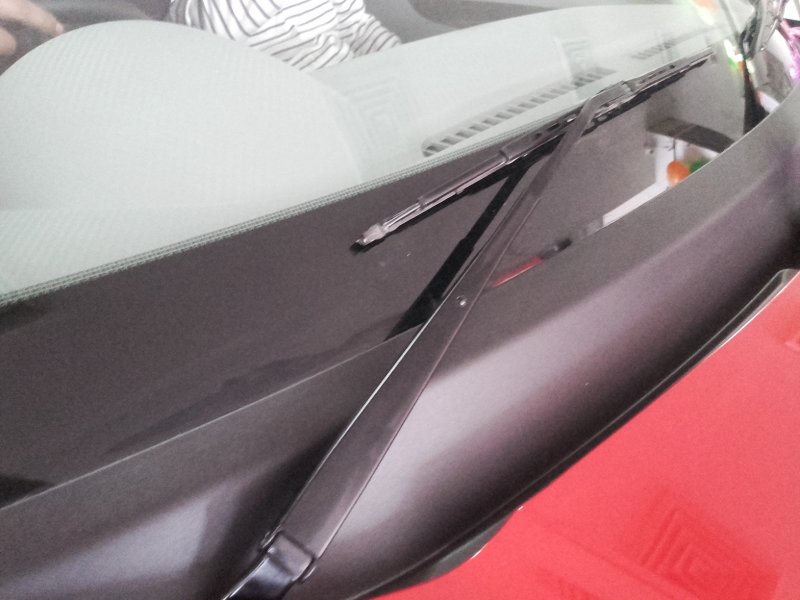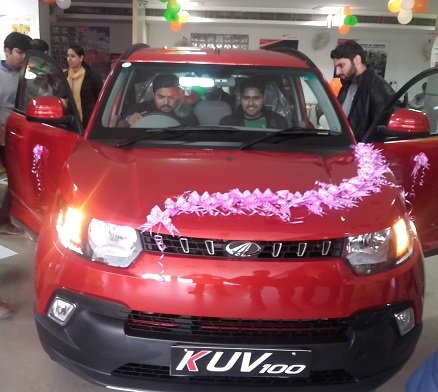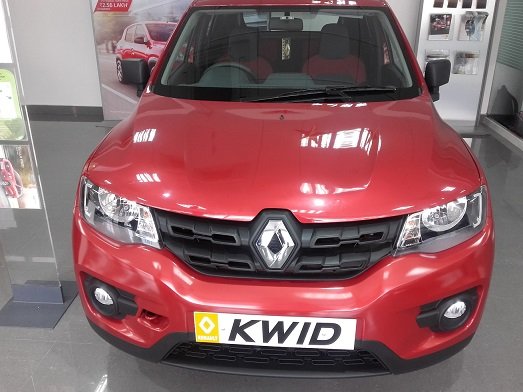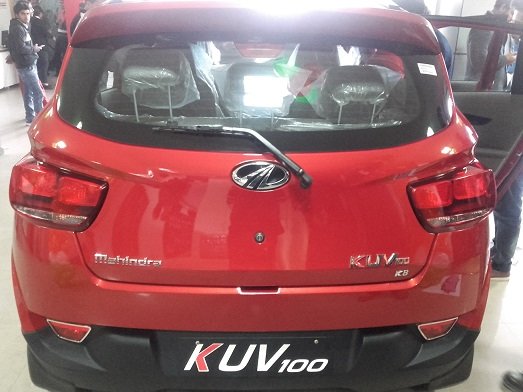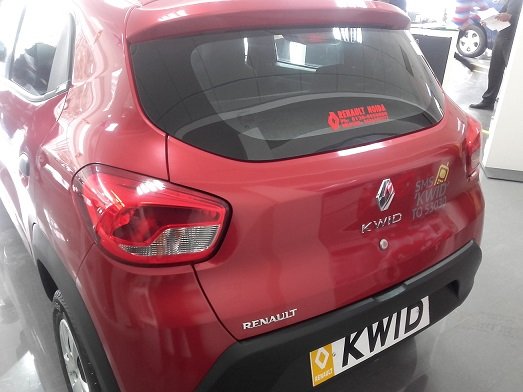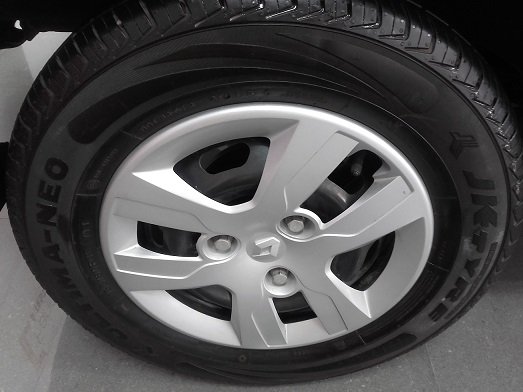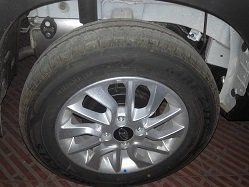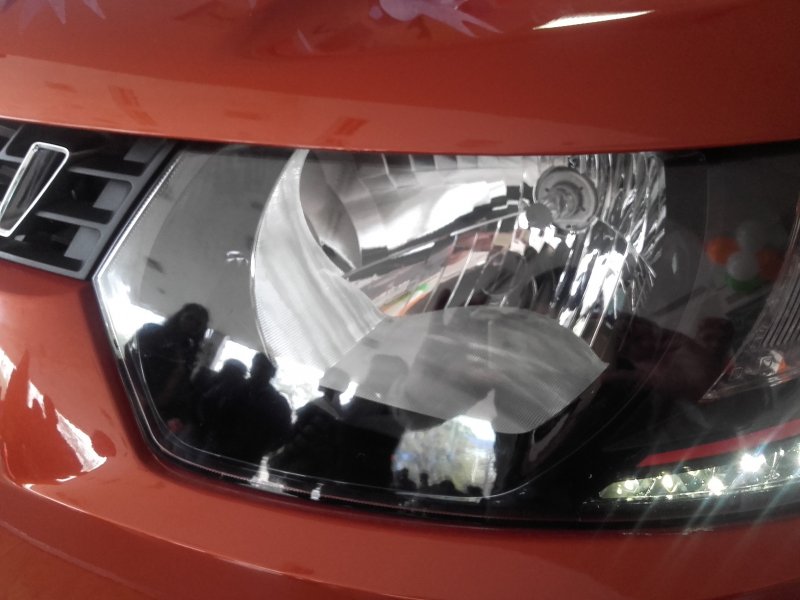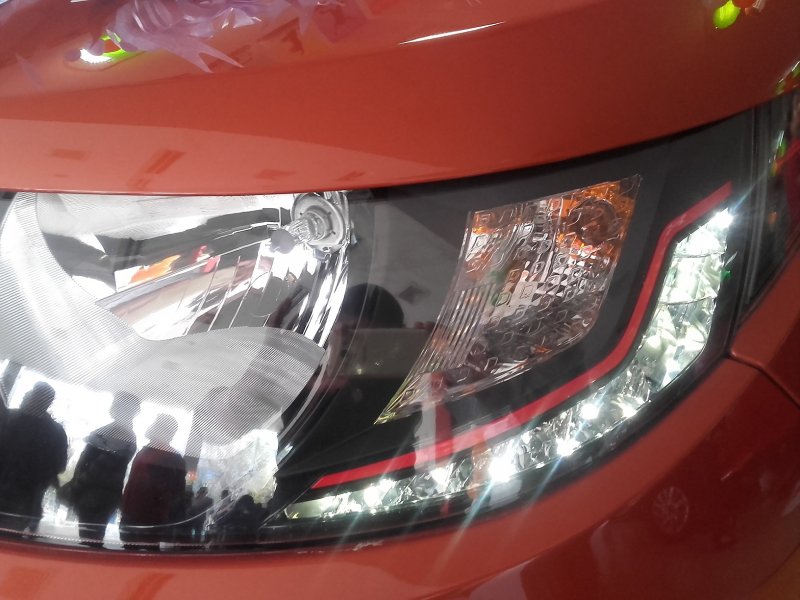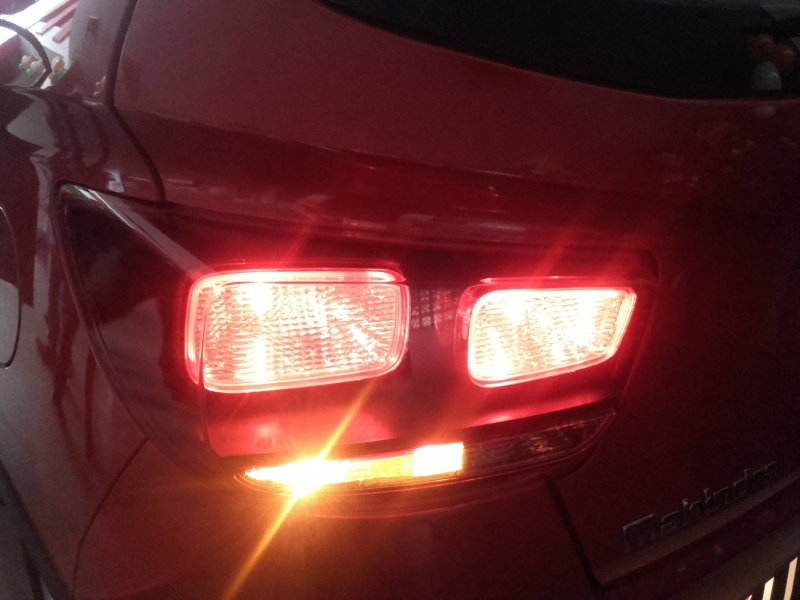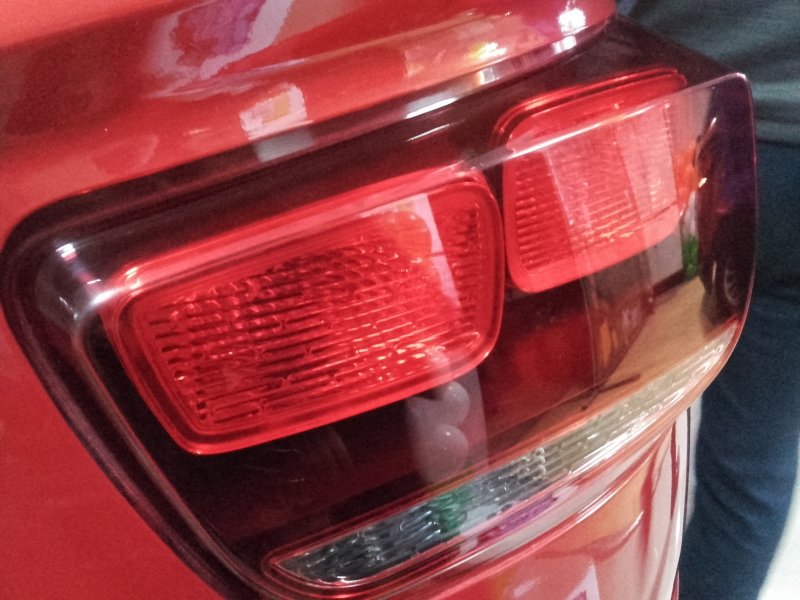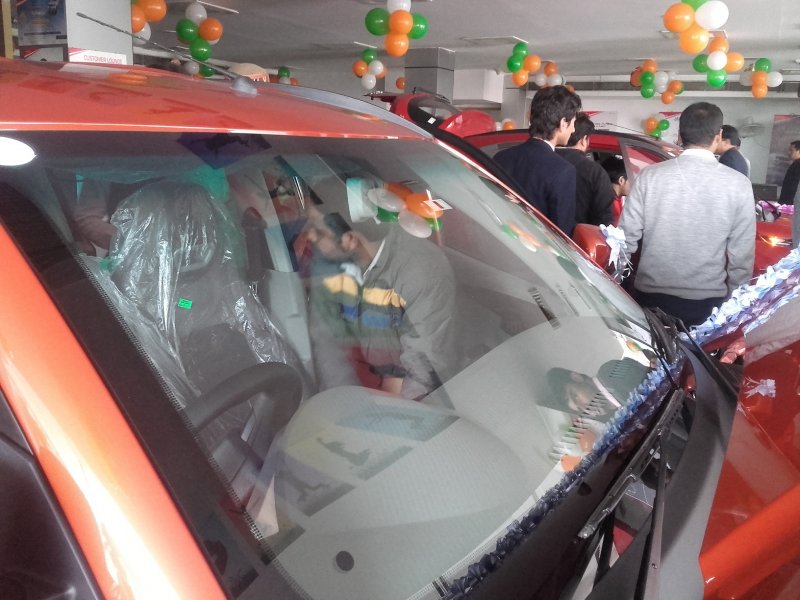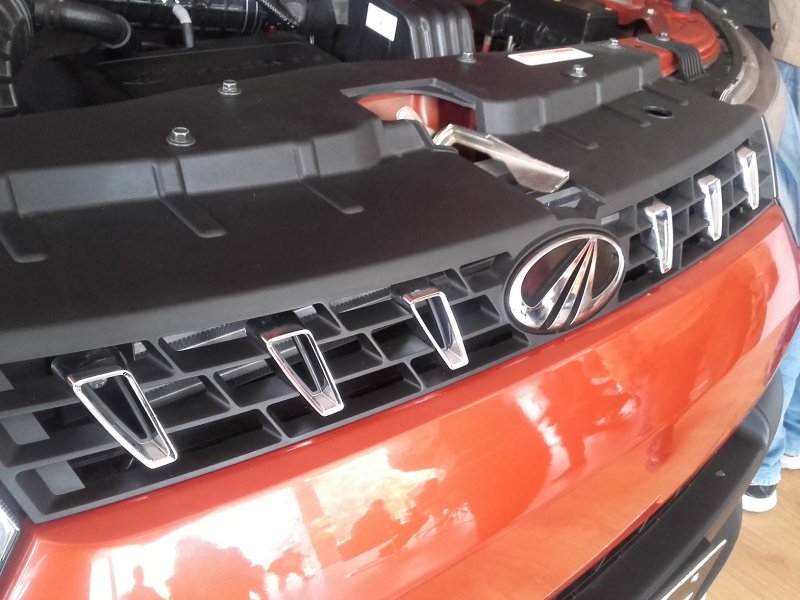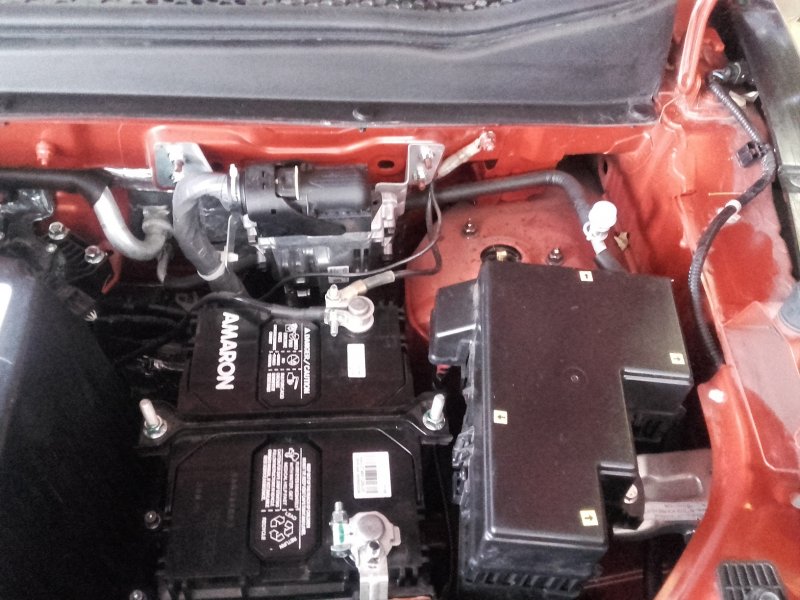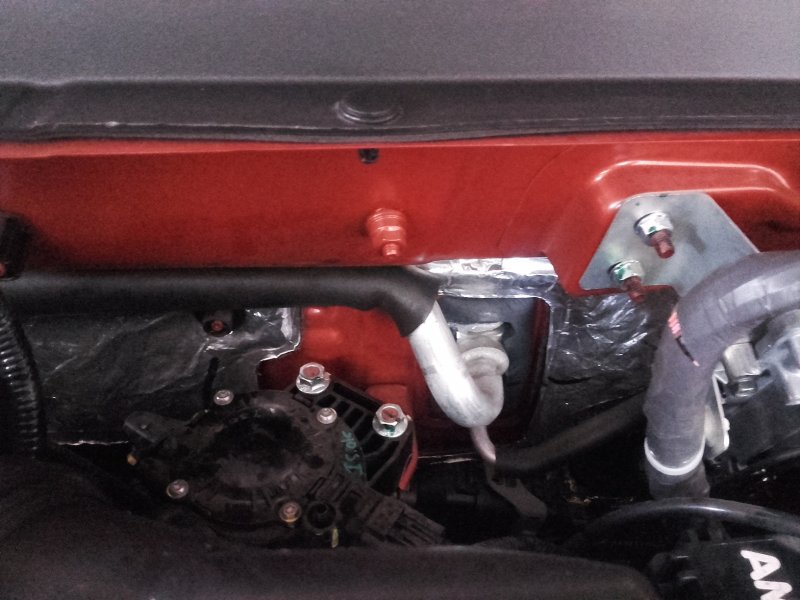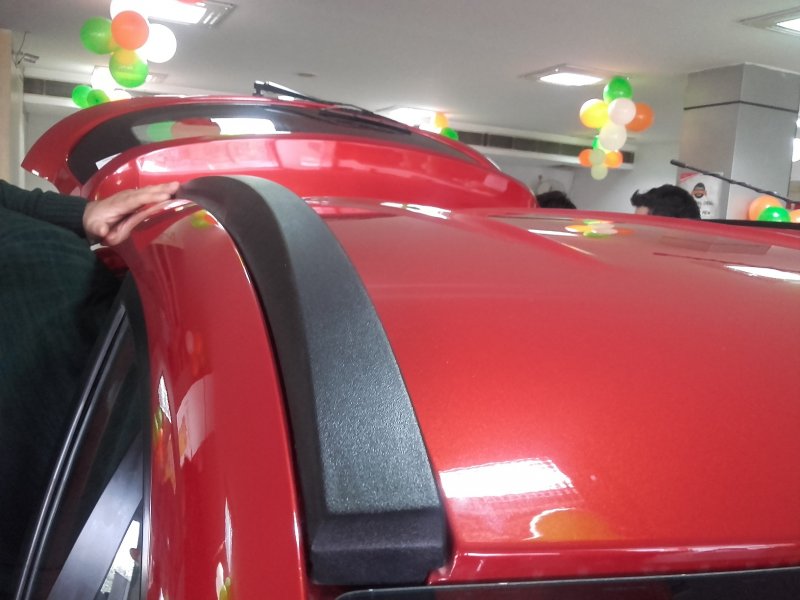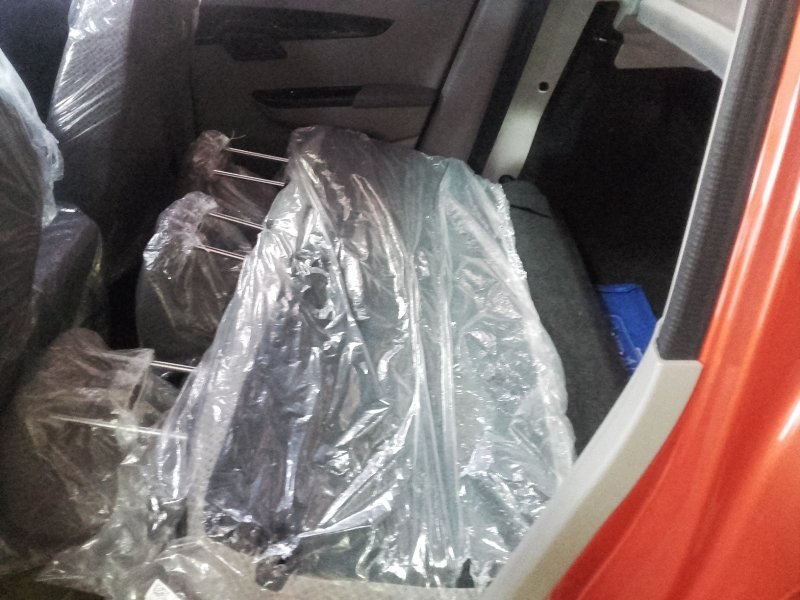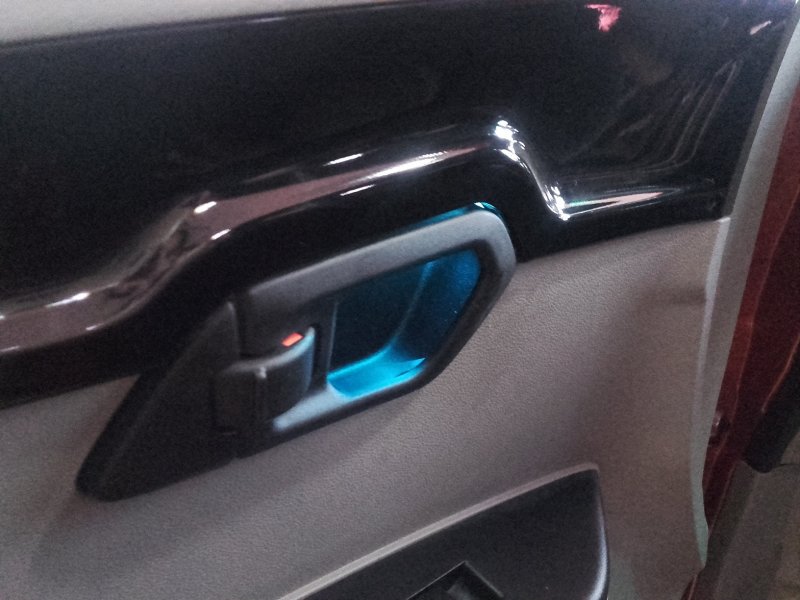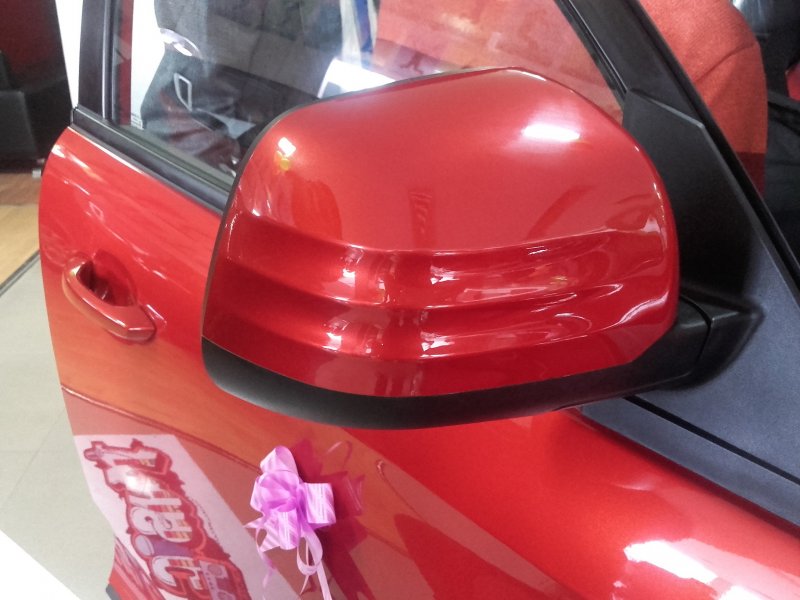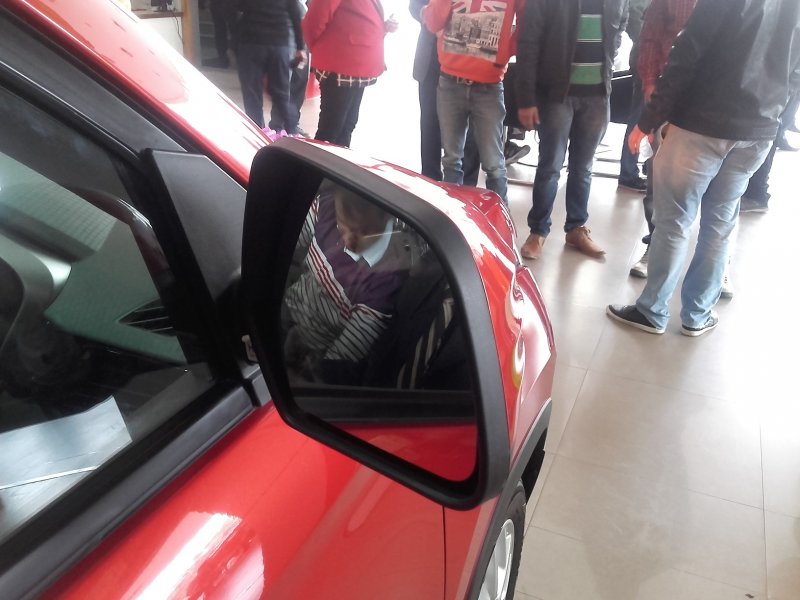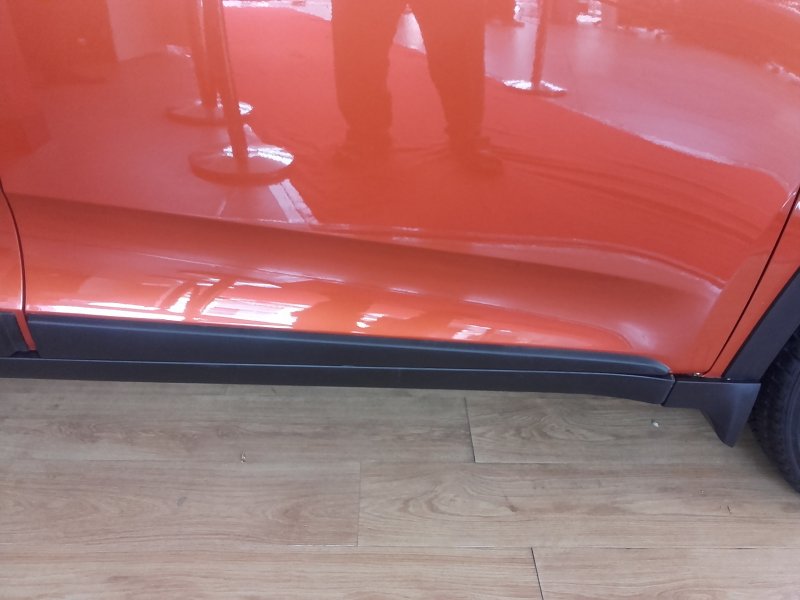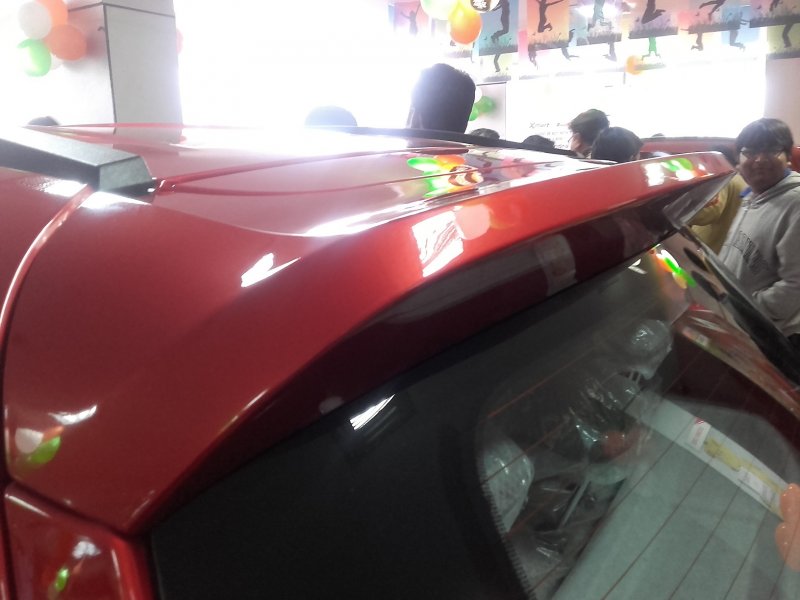Mahindra's New Micro SUV Named KUV100
- Thread Starter IndicaDLS2002
- Start date
Well, I believe it's overpriced. I dislike the design in pics. The rear is simply horrendous. Interiors are decent but the dashboard design is quirky. The less I say about the Handbrake positioning the better. Price was the only thing making me show an interest but now I don't think this will have many takers.
On the other hand Tata can price Zica very competitively now. If they are smart they should launch it ASAP.
On the other hand Tata can price Zica very competitively now. If they are smart they should launch it ASAP.
Last edited:
Disappointed pricing.
I was excited before launch but now seems I will not even bother to take a TD. Priced above new Figo. Even if they give lots of features but no where close to figo 1.5 powerful engine. Will it still sell more than figo? NO comments. I never understand what our janta likes.
I was excited before launch but now seems I will not even bother to take a TD. Priced above new Figo. Even if they give lots of features but no where close to figo 1.5 powerful engine. Will it still sell more than figo? NO comments. I never understand what our janta likes.
the design is totally a disproportional IMO
Might be in picture it looks ok but in flesh i dont think so, especially the side view. Looks worse than the Nano.
The tyres are so small for the body of this size.
They should have made it as a 5 seater, what is the use of the middle seat in the front row. im sure the driver will have a tough time.
Might be in picture it looks ok but in flesh i dont think so, especially the side view. Looks worse than the Nano.
The tyres are so small for the body of this size.
They should have made it as a 5 seater, what is the use of the middle seat in the front row. im sure the driver will have a tough time.
Friends,
Just returned home from the unveiling of the KUV-100 at the dealer. People are in general disappointed by 2 main things i.e Pricing and the Gear Shift Knob. I found the front legroom inappropriate for tall people when seat is pushed back at max. The boot is apparently smaller in space than Kwid. I will be posting a 100 Pics coverage along with some pics of the KWID for design/space comparison in a short while. Price wise both Kwid and KUV-100 have no comparison. I don't know how will it be able to take on veterans like Swift and i10 and the more recent Figo Hatch. People were surely checking it out but the result and opinions about it were very luke-warm.
Regards
Akash
Just returned home from the unveiling of the KUV-100 at the dealer. People are in general disappointed by 2 main things i.e Pricing and the Gear Shift Knob. I found the front legroom inappropriate for tall people when seat is pushed back at max. The boot is apparently smaller in space than Kwid. I will be posting a 100 Pics coverage along with some pics of the KWID for design/space comparison in a short while. Price wise both Kwid and KUV-100 have no comparison. I don't know how will it be able to take on veterans like Swift and i10 and the more recent Figo Hatch. People were surely checking it out but the result and opinions about it were very luke-warm.
Regards
Akash
Friends,
Just returned home from the unveiling of the KUV-100 at the dealer. People are in general disappointed by 2 main things i.e Pricing and the Gear Shift Knob. I found the front legroom inappropriate for tall people when seat is pushed back at max. The boot is apparently smaller in space than Kwid. I will be posting a 100 Pics coverage along with some pics of the KWID for design/space comparison in a short while. Price wise both Kwid and KUV-100 have no comparison. I don't know how will it be able to take on veterans like Swift and i10 and the more recent Figo Hatch. People were surely checking it out but the result and opinions about it were very luke-warm.
Regards
Akash
Just returned home from the unveiling of the KUV-100 at the dealer. People are in general disappointed by 2 main things i.e Pricing and the Gear Shift Knob. I found the front legroom inappropriate for tall people when seat is pushed back at max. The boot is apparently smaller in space than Kwid. I will be posting a 100 Pics coverage along with some pics of the KWID for design/space comparison in a short while. Price wise both Kwid and KUV-100 have no comparison. I don't know how will it be able to take on veterans like Swift and i10 and the more recent Figo Hatch. People were surely checking it out but the result and opinions about it were very luke-warm.
Regards
Akash
I am doubtful this juggard will work, at the target audience (the youth).
Zica bring it on, you can am sure with your VFM pricing will eat this KUV1OO to the bakery.
regards
vinod
Mahindra KUV100 review, test drive
The KUV100 (pronounced ‘one double oh’) is the latest addition to SUV maker, Mahindra & Mahindra’s (M&M) burgeoning model line-up. M&M may market the KUV100 as a compact SUV but in reality think of the model as the Indian manufacturer’s first indigenously developed ‘car’. The KUV100’s 3.6 metre length, front-wheel-drive setup and monocoque construction broadly puts it in the same category as hatchbacks such as the Maruti Celerio, Maruti Swift, Hyundai Grand i10 and the Tata Bolt.
A rival to conventional hatchbacks it may be, but there’s nothing conventional about the way the KUV100 looks. Like the template-busting Renault Kwid that was launched last year, the KUV100 too relies on SUV-like cues to distinguish itself from the crowd. The final product gets your attention, though not necessarily for the right reasons. There’s a mishmash of styling elements, the proportions are awkward and there’s a general lack of cohesiveness to the design; the SUV-like front and the hatchback tail could very well belong to different cars.
View the KUV head on and it will certainly catch your eye. The front is similar to what we’ve seen on newer SsangYong concepts (remember Mahindra owns the Korean SUV maker), but there’s a hint of Range Rover Evoque to the pinched grille and the acutely swept back headlights which extend almost all the way to the A-pillar. There’s beefy cladding on the lower portion of the bumper and a scuff plate at the bottom to announce the KUV100’s SUV credentials.
However, it’s in the side profile that the KUV looks comically disproportionate. Also, there are too many design elements like the pronounced crease extending from the headlights to the front doors, and another one originating at the rear door that rises to the tail. The oversized wheel arches dwarf the 14-inch wheels which are small even by hatchback standards. Look closely and you’ll notice the rear door handles sit aft of the rear window (à la the Chevrolet Beat) rather than on the doors. But this is a case of form following function as we’ll soon find out. From the rear, the KUV gives the impression of being a tall hatchback with crossover detailing in its blackened bumper base. The protruding tail-lamps, again, look distinctive. Just wish the good folk at Pininfarina (recently acquired by Mahindra) could have been involved when the KUV was in its
design stages.
What is it like to drive?
The KUV100 is also the launch vehicle for Mahindra’s new mFalcon line of petrol and diesel engines so there’s lots to talk about. Let's focus on the petrol engine first. Christened mFalcon G80, it’s an all-aluminium three-cylinder, 1.2-litre unit that uses variable valve timing on both intake and exhaust. The engine produces 81.8bhp at 5,500rpm and 11.7kgm from 3,500-3,600rpm which is on the higher side for this class of vehicle.
Driving the KUV around Mahindra’s test track at its Chakan plant, the initial feeling is that the petrol engine is good but not great. While the engine responds well to throttle inputs and driveability is fine, it offers little to excite. Power delivery is flat and the build up of revs isn’t particularly urgent either. It’s only post 4,500rpm or so that the engine gets a fresh wind and revs with more vigour. However, it’s unlikely KUV users will really stretch it so much. The engine also sounds thrummy when revved hard though overall refinement levels are quite good. The engine comes mated to a five-speed manual gearbox and we’re glad to report the location of the gearshift, placed on the centre console, falls nicely to hand the shift action has a short throw and is remarkably crisp. In fact, the gearbox is one of the best bits of the KUV100.The clutch is light too but could be smoother to engage.
Mahindra’s past experience with diesel engines seems to have helped when developing the new D75 diesel engine that comes across as the more rounded of the mFalcon motors. Like the petrol, the diesel engine is also a three-cylinder, 1.2-litre unit though this one uses a cast iron block and aluminium head. This turbocharged engine makes 76.4bhp at 3,750rpm and a strong 19.37kgm between 1,750-2,250rpm. Also worth highlighting is that the D75 motor offers two drive modes – Power which is the stock mode and Economy – and adjusts fuelling accordingly.
The D75 motor doesn’t feel very enthusiastic from the get-go but like most small-capacity diesel engines, comes into its own once the turbo has spooled up. Here, that happens at about 1,900rpm. Post that mark, you can feel the greater pulling power at your disposal, but there’s no spike in power delivery as such. The engine doesn’t rev all that quick either so in a sense, this engine is down on the excitement quotient too. But it does offer a linear and friendly build of power that many will like. Refinement levels are also good as small-capacity diesels go. Gearshifts are nice too but once again the clutch could do with a more progressive action.
Mahindra claims a fuel economy of 25.3kpl for the diesel KUV100 when driven in Eco mode. As you switch from Power to Eco, you can feel performance take a serious hit. Not only do responses get duller, the engine also doesn’t rev beyond 3,600rpm in the mode. As you’d have guessed, Eco is not the mode for anyone in a hurry.
Source:Mahindra KUV100 Review | Cars First Drive | Budget SUVs | Autocar India
The KUV100 (pronounced ‘one double oh’) is the latest addition to SUV maker, Mahindra & Mahindra’s (M&M) burgeoning model line-up. M&M may market the KUV100 as a compact SUV but in reality think of the model as the Indian manufacturer’s first indigenously developed ‘car’. The KUV100’s 3.6 metre length, front-wheel-drive setup and monocoque construction broadly puts it in the same category as hatchbacks such as the Maruti Celerio, Maruti Swift, Hyundai Grand i10 and the Tata Bolt.
A rival to conventional hatchbacks it may be, but there’s nothing conventional about the way the KUV100 looks. Like the template-busting Renault Kwid that was launched last year, the KUV100 too relies on SUV-like cues to distinguish itself from the crowd. The final product gets your attention, though not necessarily for the right reasons. There’s a mishmash of styling elements, the proportions are awkward and there’s a general lack of cohesiveness to the design; the SUV-like front and the hatchback tail could very well belong to different cars.
View the KUV head on and it will certainly catch your eye. The front is similar to what we’ve seen on newer SsangYong concepts (remember Mahindra owns the Korean SUV maker), but there’s a hint of Range Rover Evoque to the pinched grille and the acutely swept back headlights which extend almost all the way to the A-pillar. There’s beefy cladding on the lower portion of the bumper and a scuff plate at the bottom to announce the KUV100’s SUV credentials.
However, it’s in the side profile that the KUV looks comically disproportionate. Also, there are too many design elements like the pronounced crease extending from the headlights to the front doors, and another one originating at the rear door that rises to the tail. The oversized wheel arches dwarf the 14-inch wheels which are small even by hatchback standards. Look closely and you’ll notice the rear door handles sit aft of the rear window (à la the Chevrolet Beat) rather than on the doors. But this is a case of form following function as we’ll soon find out. From the rear, the KUV gives the impression of being a tall hatchback with crossover detailing in its blackened bumper base. The protruding tail-lamps, again, look distinctive. Just wish the good folk at Pininfarina (recently acquired by Mahindra) could have been involved when the KUV was in its
design stages.
What is it like to drive?
The KUV100 is also the launch vehicle for Mahindra’s new mFalcon line of petrol and diesel engines so there’s lots to talk about. Let's focus on the petrol engine first. Christened mFalcon G80, it’s an all-aluminium three-cylinder, 1.2-litre unit that uses variable valve timing on both intake and exhaust. The engine produces 81.8bhp at 5,500rpm and 11.7kgm from 3,500-3,600rpm which is on the higher side for this class of vehicle.
Driving the KUV around Mahindra’s test track at its Chakan plant, the initial feeling is that the petrol engine is good but not great. While the engine responds well to throttle inputs and driveability is fine, it offers little to excite. Power delivery is flat and the build up of revs isn’t particularly urgent either. It’s only post 4,500rpm or so that the engine gets a fresh wind and revs with more vigour. However, it’s unlikely KUV users will really stretch it so much. The engine also sounds thrummy when revved hard though overall refinement levels are quite good. The engine comes mated to a five-speed manual gearbox and we’re glad to report the location of the gearshift, placed on the centre console, falls nicely to hand the shift action has a short throw and is remarkably crisp. In fact, the gearbox is one of the best bits of the KUV100.The clutch is light too but could be smoother to engage.
Mahindra’s past experience with diesel engines seems to have helped when developing the new D75 diesel engine that comes across as the more rounded of the mFalcon motors. Like the petrol, the diesel engine is also a three-cylinder, 1.2-litre unit though this one uses a cast iron block and aluminium head. This turbocharged engine makes 76.4bhp at 3,750rpm and a strong 19.37kgm between 1,750-2,250rpm. Also worth highlighting is that the D75 motor offers two drive modes – Power which is the stock mode and Economy – and adjusts fuelling accordingly.
The D75 motor doesn’t feel very enthusiastic from the get-go but like most small-capacity diesel engines, comes into its own once the turbo has spooled up. Here, that happens at about 1,900rpm. Post that mark, you can feel the greater pulling power at your disposal, but there’s no spike in power delivery as such. The engine doesn’t rev all that quick either so in a sense, this engine is down on the excitement quotient too. But it does offer a linear and friendly build of power that many will like. Refinement levels are also good as small-capacity diesels go. Gearshifts are nice too but once again the clutch could do with a more progressive action.
Mahindra claims a fuel economy of 25.3kpl for the diesel KUV100 when driven in Eco mode. As you switch from Power to Eco, you can feel performance take a serious hit. Not only do responses get duller, the engine also doesn’t rev beyond 3,600rpm in the mode. As you’d have guessed, Eco is not the mode for anyone in a hurry.
Source:Mahindra KUV100 Review | Cars First Drive | Budget SUVs | Autocar India
Zica bring it on, you can am sure with your VFM pricing will eat this KUV1OO to the bakery.
![Clap [clap] [clap]](https://www.theautomotiveindia.com/forums/images/smilies/Clap.gif)
If I am in the market with 8 lakhs, I will buy a far more refined 4 cylinder car rather this pseudo suv!


![Wink [;)] [;)]](https://www.theautomotiveindia.com/forums/images/smilies/Wink.gif)

